
Museum Artifacts: EKCO Miracle Can Opener 885 (c. 1960s) and EKCO Helmet Bottle Stopper (c. 1940s)
Made by: Ekco Products Co., 1949 N. Cicero Ave., Chicago, IL [Belmont-Cragin]
“We taught your mother a new way to open chicken soup,” read the presumptuous tagline of a 1965 advertisement for the Miracle Can Opener—arguably the most recognizable of the thousands of utensils produced by the EKCO Housewares Company. “She used to work her fingers to the bone, opening those cans, until we invented the Miracle Can Opener about thirty-five years ago. It had a gear (of all things!) and long handles you could get a good grip on. And when you turned the key, it cut through the tin as easy as pie. We’d made a major breakthrough.
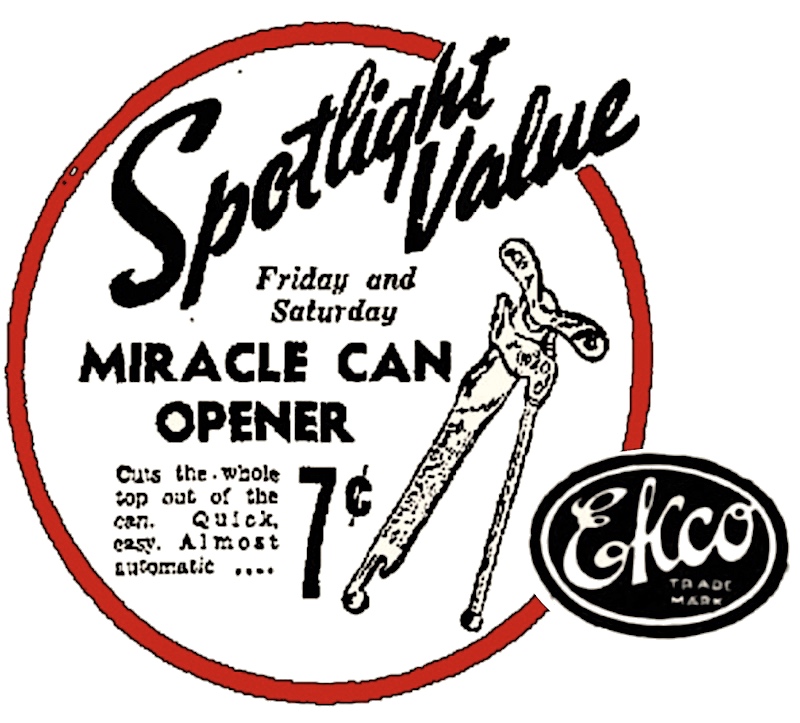 “Just about every family got one of our can openers. And anybody who was tall enough to reach the kitchen drawer used it. Since then, we’ve developed bigger and better Ekco can openers, but we keep selling this one. As many as six or seven million a year. Maybe because it’s so handy. Maybe because it brings back warm memories. Of all that chicken soup?”
“Just about every family got one of our can openers. And anybody who was tall enough to reach the kitchen drawer used it. Since then, we’ve developed bigger and better Ekco can openers, but we keep selling this one. As many as six or seven million a year. Maybe because it’s so handy. Maybe because it brings back warm memories. Of all that chicken soup?”
Maybe it’s also a bit sad to presume we’d all nostalgically associate our moms with a can opener, but when EKCO ran these ads in magazines like Better Homes and Gardens in ‘65, it was a tactical maneuver more than anything; a way to reassure the general populous that everything was still “business as usual” at the 75 year-old company—even though it definitely wasn’t.
Despite posting a profit in every year of its existence, dating back to 1889, EKCO (a name derived from its original identity as the Edward Katzinger Company) officially surrendered its independence in September of 1965, becoming a division of the massive conglomerate known as the American Home Products Corporation. It was the beginning of the end for EKCO as a Chicago institution, but they were hardly in a position to complain about it.
[1950s stock footage of women working at the EKCO plant at N. Cicero Avenue and Armitage Ave.]
For decades, EKCO itself had been the conquering king of the non-electric housewares market, absorbing dozens of smaller businesses across the country and huddling their goods under its Chicago tent; from cutlery and flatware to baking supplies, pressure cookers, chemicals, plastic accessories, aluminum foil containers, bathroom fixtures, lighting, building supplies, and more. It was the growing fear of antitrust lawsuits, in fact, that may have inspired 71 year-old EKCO chairman Arthur Keating to retire from his position and sell the family business to American Home Products for a cool $145 million in stock.
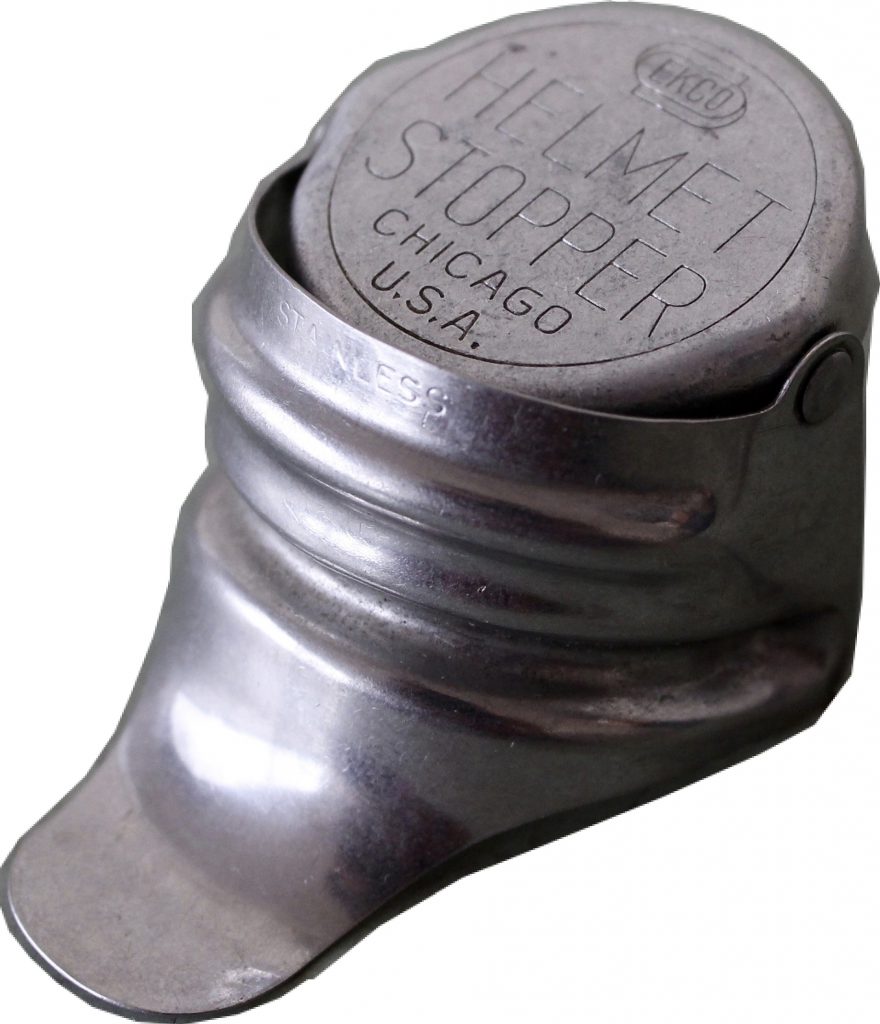 Keating, despite being the son of company founder Edward Katzinger, suffered no blind allegiances to the past. Case in point, as a Jewish man observing the horrors of World War II, he unflinchingly changed both the official corporate name of the business (from Edward Katzinger Co. to the EKCO Products Company) and his own surname (from Katzinger to Keating)—likely for no other reason than to sound less German. As a businessman, he also helped bring the low-price, volume-based sales strategy of retailers like Sears Roebuck into the manufacturer’s arena. “We never talk about what the company can get from a wholesaler or department store,” he told Fortune magazine in 1949. “We talk about what the consumer will pay for it.”
Keating, despite being the son of company founder Edward Katzinger, suffered no blind allegiances to the past. Case in point, as a Jewish man observing the horrors of World War II, he unflinchingly changed both the official corporate name of the business (from Edward Katzinger Co. to the EKCO Products Company) and his own surname (from Katzinger to Keating)—likely for no other reason than to sound less German. As a businessman, he also helped bring the low-price, volume-based sales strategy of retailers like Sears Roebuck into the manufacturer’s arena. “We never talk about what the company can get from a wholesaler or department store,” he told Fortune magazine in 1949. “We talk about what the consumer will pay for it.”
In other words, rather than crafting the ideal product for a certain need—like the old-school manufacturers did— EKCO offered up every option, from a 15-cent can opener to a 6-dollar one, paired with any handle color in the rainbow. It was the new 20th century “deluge” style of capitalism fully realized, and, to borrow a phrase, it “taught your mother a new way.”
 [1955 comic strip]
[1955 comic strip]
Ekcoes of the Past
“If growing up in a business influences the direction of a young man’s career, Arthur Keating was perhaps predestined to devote his business life to Ekco Products Company.” —Chicago Tribune, July 17, 1961
Arthur Katzinger/Keating certainly had a headstart in life that many sons of immigrants did not. His father, Edward Katzinger (b. 1863), did the heavy lifting—moving from his native Austria to the U.S. as an 18 year-old in 1881; adapting his old world skills as a “tinner” to factory life in New York City; then relocating out West to start his own business, first in Kansas City, then Chicago, where he specialized in manufacturing baking tins for the commercial baking industry.
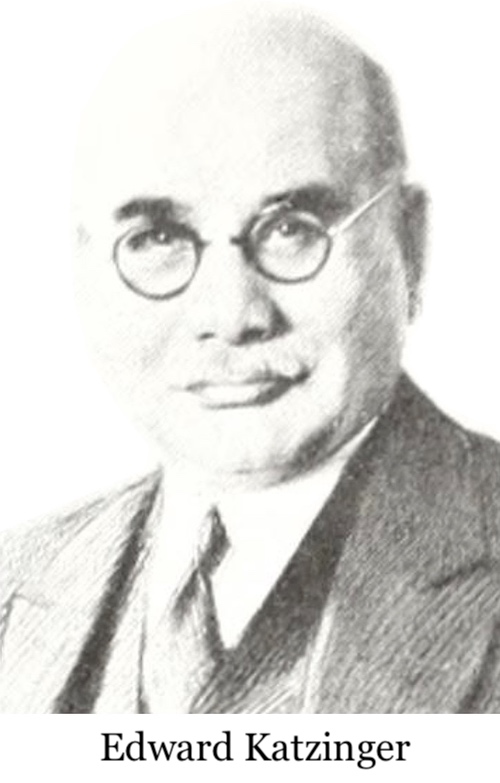 By the time Arthur was born in 1894, the Katzinger family (including dad, mother Anna, sister Laura and big brother Sidney) were still living in a small apartment above Edward’s tinsmith shop at 369 S. Halsted Street (850 S. Halsted by current street numbering) on the Near West Side. This home was likely part of the Jane Addams Hull House, an important multi-ethnic housing development that welcomed many immigrants into the city, and has since become a Historic Landmark on the campus of the University of Illinois-Chicago. Back in the 1890s, poverty was the norm in the neighborhood, but Edward Katzinger—who once took a side gig making cornice work for the “White City” at the 1893 Columbian Exposition—was the classic ambitious outlier.
By the time Arthur was born in 1894, the Katzinger family (including dad, mother Anna, sister Laura and big brother Sidney) were still living in a small apartment above Edward’s tinsmith shop at 369 S. Halsted Street (850 S. Halsted by current street numbering) on the Near West Side. This home was likely part of the Jane Addams Hull House, an important multi-ethnic housing development that welcomed many immigrants into the city, and has since become a Historic Landmark on the campus of the University of Illinois-Chicago. Back in the 1890s, poverty was the norm in the neighborhood, but Edward Katzinger—who once took a side gig making cornice work for the “White City” at the 1893 Columbian Exposition—was the classic ambitious outlier.
While he only had about a half-dozen workers on the payroll in the late ‘90s, that number grew to 22 by the time the business was finally incorporated as the Edward Katzinger Company in 1903 (the “EKCO” shorthand nickname first came into use about a year later).
In 1909, after about a decade in a small plant at West Washington Street and Canal Street, the Katzinger Co. moved down the road to a new five-story building at 120 North Peoria Street; next-door to the headquarters of a baking supply rival, the J.W. Allen Company. Here, Katzinger and his expanded team of 40 employees continued to focus primarily on making equipment for professional bakers, confectioners and ice cream parlours, but a new line of low-cost baking pans for the consumer market laid the groundwork for Ekco’s great leap forward. By 1914, the staff had doubled again, and an expanded plant was in the works on the same block as the Peoria Street building, on the corner of Washington and Sangamon Street.
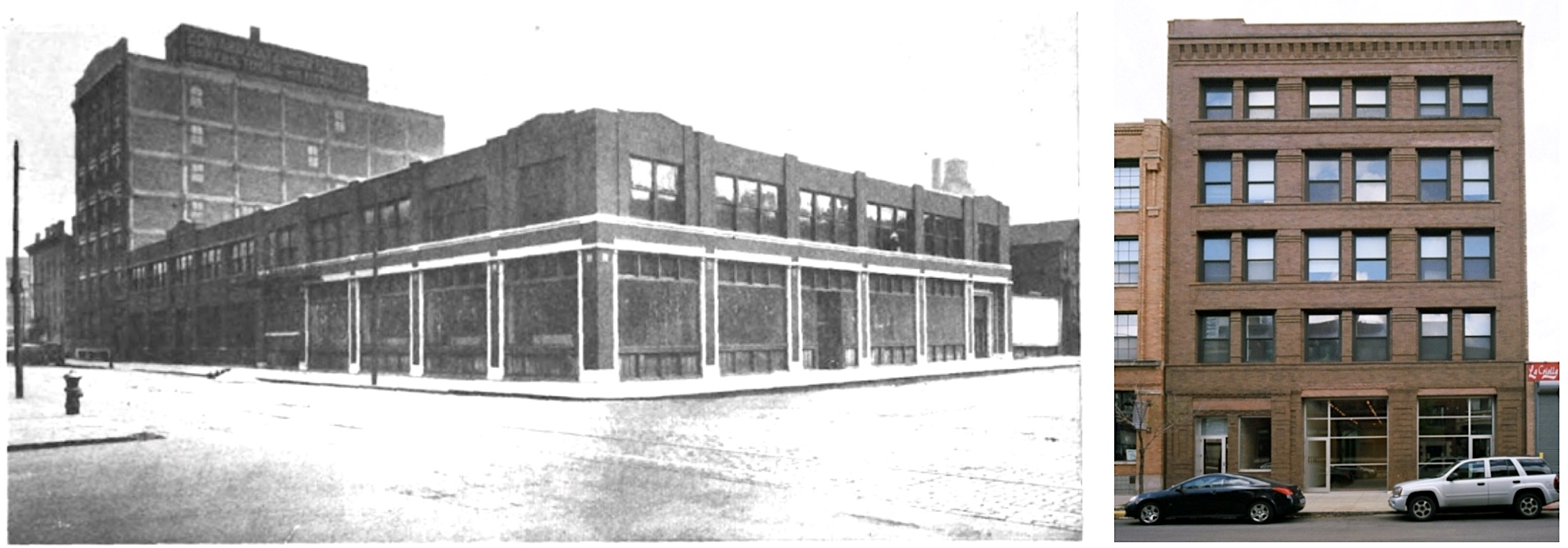
[Above Left: The new EKCO complex at Washington Street and Sangamon Street, 1921. Above Right: Another EKCO building on that same block, at 120 N. Peoria Street, as it looks today. Below: Two EKCO baking pan ads from 1915]
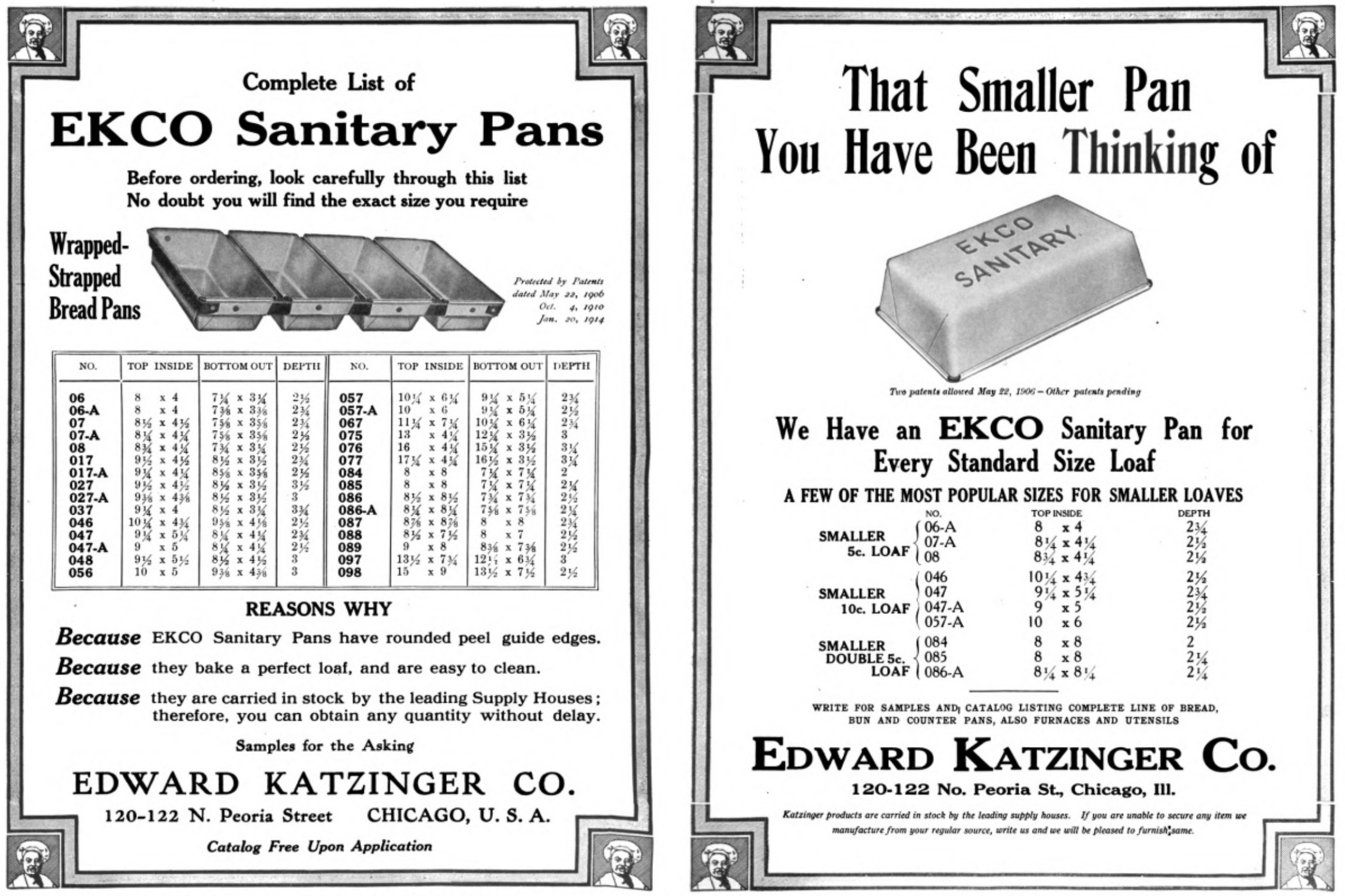
During this same period, young Arthur Katzinger—who was studying mechanical engineering at the Armour Institute (aka the Illinois Institute of Technology)—might indeed have looked predestined to a fruitful career with the family business. But his path had far more twists and bends than it appeared.
Before getting into college, Arthur had actually been something of a troubled teen; so much so that he was expelled from high school for his consistent misconduct. A frustrated Edward responded by vanquishing his son to a military school, where the youngster supposedly learned the ills of his ways and came back reformed; eventually captaining half the sports teams at his college, despite a stocky 5’4” build.
With his older brother Sidney already employed at EKCO, Arthur wasn’t technically the heir apparent. But there was still an understanding, or an obligation, as to where his destiny lied.
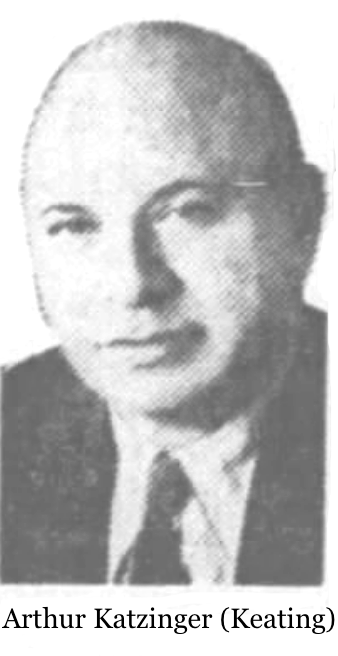 “One day in 1916 I was graduated from Armour institute,” he told the Tribune in 1961, “and I reported for work [at EKCO] the same day.” It was plant operations work; a lot of it on the night shift; a boy amongst men.
“One day in 1916 I was graduated from Armour institute,” he told the Tribune in 1961, “and I reported for work [at EKCO] the same day.” It was plant operations work; a lot of it on the night shift; a boy amongst men.
Less than three years later, in January of 1919, Arthur’s mother and his brother Sidney both died tragically during the Spanish flu epidemic. Sidney was only 28.
Shortly thereafter, Arthur recalled that his father “took me out of the factory and told me to run the company.”
Being from the generation he was, Arthur Keating never communicated any sense of trauma from these events, instead attributing his struggles with insomnia to a circadian hangover from those old night-shift schedules of his youth. By 1923, he was vice president of the Edward Katzinger Company, and for all intents and purposes, more in charge of the goings on there than his father, who remarried that year and entered a bit of an early retirement.
Big Growth
“The tremendous increase in the volume of our business is the inevitable result of the high quality and reasonable prices of our products. It is but one phase which symbolizes the earnest, honest endeavor of every individual in our organization to give his best efforts in the production of the finest baker’s equipment.”—from a “Statement of Policy” by the president of the Edward Katzinger Co., 1921
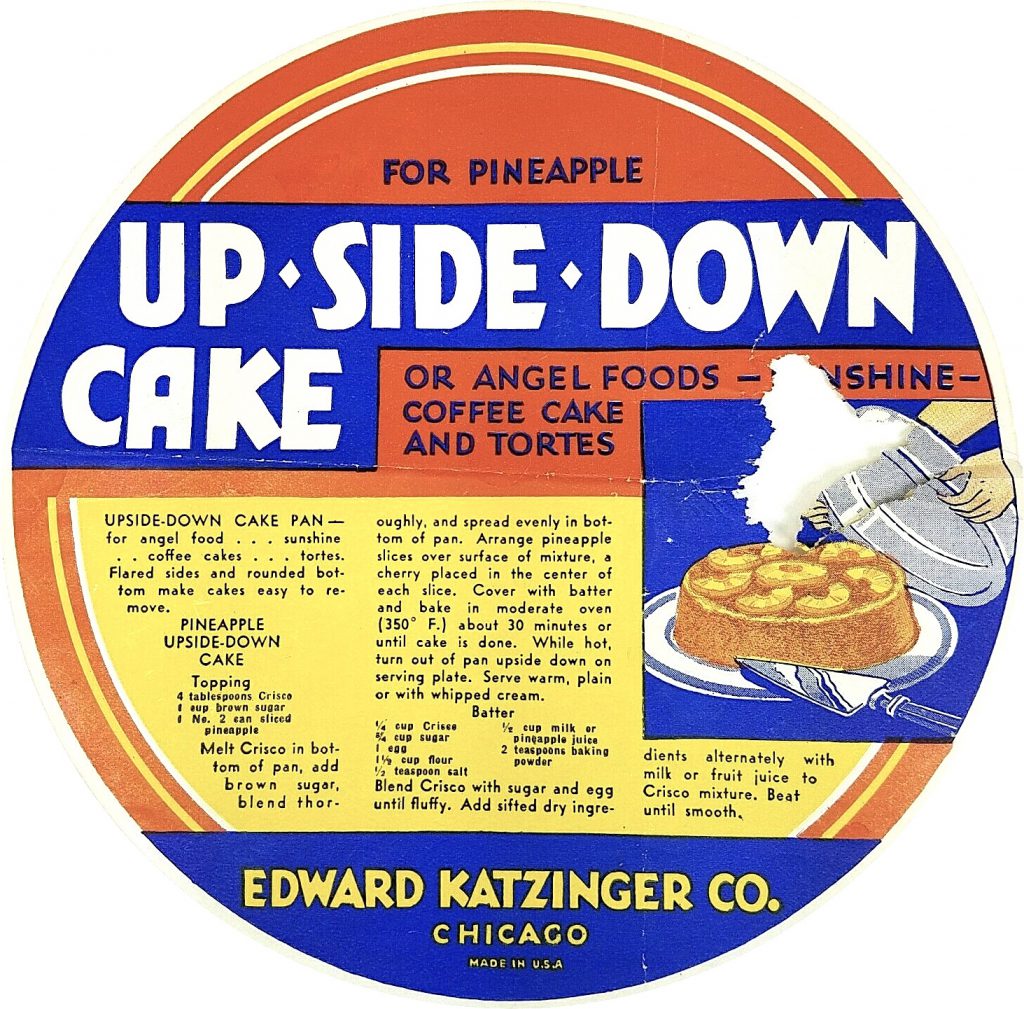 When Edward Katzinger went into business in the 1880s, bake pans were generally made-to-order, with no standardization or bulk production in existence. By contrast, when his son Arthur started managing the plant in the early 1920s, it was producing about 70,000 pans per day, all at stock sizes, ready for the masses. This was basically the template from which all other branches of the EKCO business would eventually grow.
When Edward Katzinger went into business in the 1880s, bake pans were generally made-to-order, with no standardization or bulk production in existence. By contrast, when his son Arthur started managing the plant in the early 1920s, it was producing about 70,000 pans per day, all at stock sizes, ready for the masses. This was basically the template from which all other branches of the EKCO business would eventually grow.
In a 1921 article in the Northwestern Miller, the Katzinger factory on West Washington Street was profiled as a shining example of modern baking pan production.
“The main object of the factory seems to be that eternal saving on the cost. Every operation that can be combined with another operation in a machine that is already doing other work saves something. All the savings combine to make possible a far better pan at a much lower cost. . . . Quantity production enables the manufacturers to mass the small savings into a large total, and they have not only done this on pans but they have passed on the saving to the consumer in the shape of lower prices.”
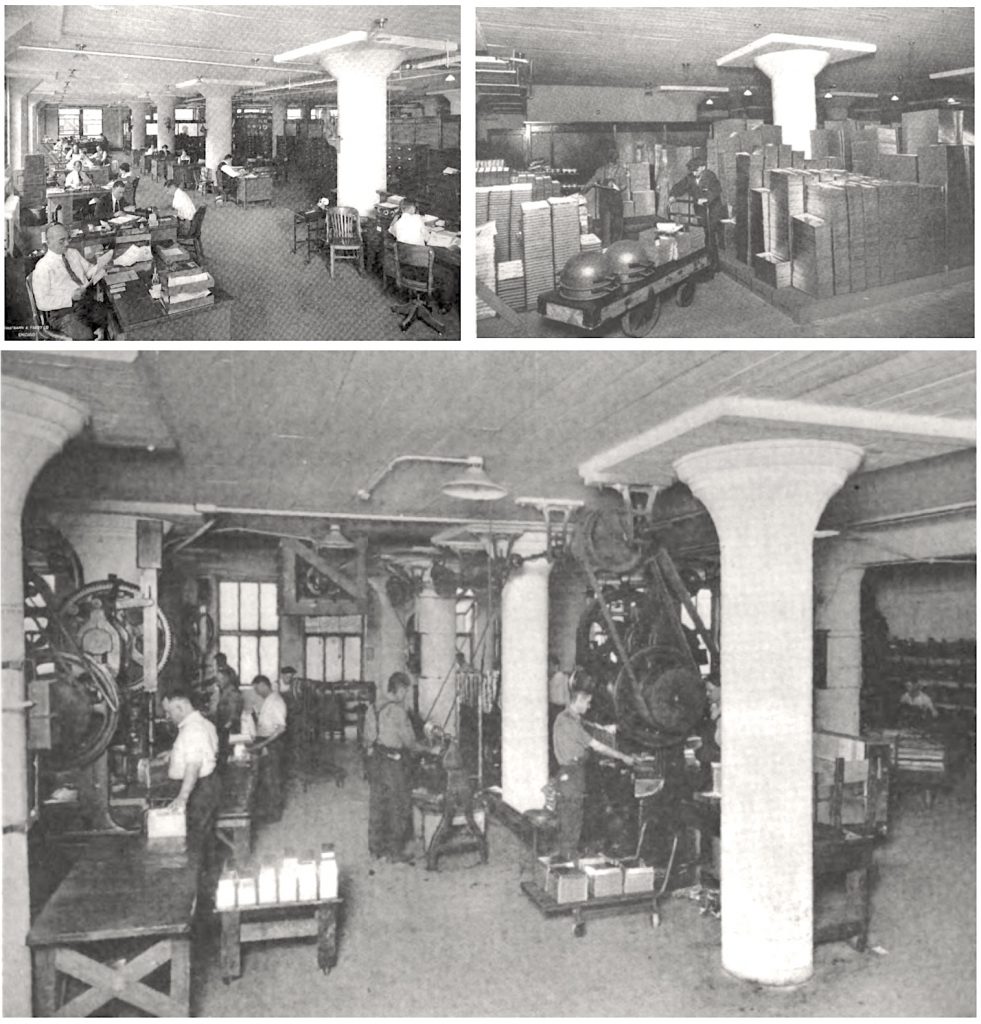 [Inside the EKCO factory, warehouse, and offices at Washington Street and Sangamon Street, 1921]
[Inside the EKCO factory, warehouse, and offices at Washington Street and Sangamon Street, 1921]
With his degree in mechanical engineering, Arthur Keating wasn’t just playing an active role in the machining efficiency of his factory, he was designing many of EKCO’s modern pans and utensils, as well.
Having survived the material shortages of World War I, EKCO’s growth was untethered in the ’20s. Another new plant opened in 1923, covering a whopping 17 acres at Cicero and Armitage Avenue. And in 1927, “King Arthur” began his conquest of the housewares industry on a national scale, starting with the acquisition of Baltimore’s venerable August Maag Company, a maker of commercial baking ware (operations were later moved to Chicago).
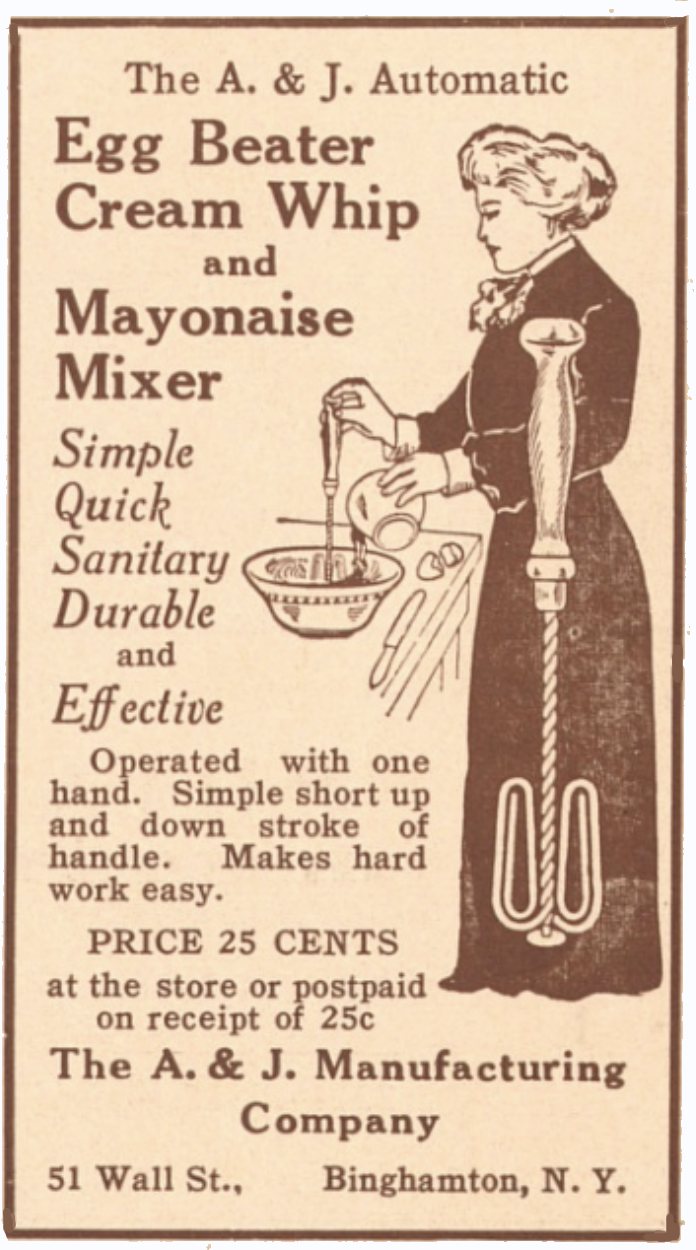 Two years later, EKCO began negotiations with the A & J Manufacturing Company, a utensil company in Binghamton, New York. If successful, buying A&J would effectively turn EKCO into a new leader in the consumer kitchenware market.
Two years later, EKCO began negotiations with the A & J Manufacturing Company, a utensil company in Binghamton, New York. If successful, buying A&J would effectively turn EKCO into a new leader in the consumer kitchenware market.
There was a stumbling block, however.
“All the legal work involved in acquiring A & J Tool company had been straightened out and the purchase was to take effect 10 days after the market crash,” according to Arthur Keating, who was leading the tense negotiations without the aid of his father, whose health was declining. “We had a lot of ‘market outs’ but decided to go through with it—for 1 million dollars in cash!”
It was a swing for the fences that Babe Ruth would have found impressive, and it basically ensured that EKCO would not only survive the approaching Depression, but thrive through much of it.
The EKCO Empire
Shortly after the A&J buyout, EKCO debuted the Miracle Can Opener, just one of many innovative tools patented by the company’s prolific new designer Myron J. Zimmer.
With consumers operating on tight budgets, the appeal of these affordable, handy doo-dads was greater than ever; seen more as “wise buys” rather than cheap substitutes for heftier utensils. The same philosophy applied to EKCO’s new lines of cutlery, following the purchase of the Geneva Cutlery Co. (of Geneva, NY) in 1934.
 [An early version of Ekco’s Miracle Can Opener, designed by Myron Zimmer and patented in 1938]
[An early version of Ekco’s Miracle Can Opener, designed by Myron Zimmer and patented in 1938]
Perhaps EKCO’s biggest financial windfall of the ‘30s, however, came with their jump into the pre-war British housewares market. With most UK manufacturers still operating by the stuffy rules of the past, Arthur Katzinger/Keating took some advice from one of his company’s top customers, Woolworth, and opened up a subsidiary business in the depressed town of Burnley in Lancashire, giving it the appropriately Britishy name of Platers and Stampers, Ltd.
Stocking the Burnley factory with about $900,000 worth of mostly used machinery and equipment in 1937, Keating watched Platers and Stampers become a $4 million company by the end of World War II, with the “Sky-Line” and “Ovenex” lines outselling the more esteemed brands made in Sheffield, and the “Prestige” line taking over the pressure cooker market.
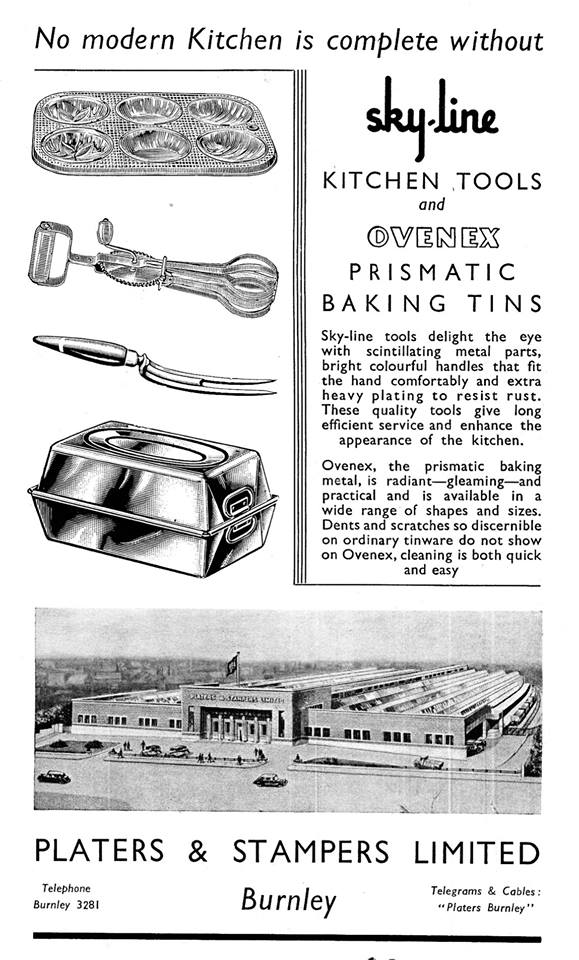 “Doing business in Britain is much easier than in the USA,” Keating later told Fortune, “because we design and price our products right, to sell in volume. Britain needs more manufacturers who will do that.”
“Doing business in Britain is much easier than in the USA,” Keating later told Fortune, “because we design and price our products right, to sell in volume. Britain needs more manufacturers who will do that.”
During the war, it was obviously hard for manufacturers in both Britain and the U.S. to focus much on their traditional products. Following Edward Katzinger’s death in 1939, Arthur took the aforementioned bold steps of renaming the company (and himself), creating the EKCO Products Company in 1944. The main factory at Cicero and Armitage was primarily a defense plant during the war years, but Keating was still wheeling and dealing, acquiring the stainless steel flatware of the Sta-Brite Products Corp. (New Haven, CT) in 1943, and the E.L. Tebbets Spool Co. (Locke Mills, Maine) and Massillon Aluminum Co. (Massillon, OH) in 1945. He also established a $400,000 research laboratory from which many new precision tool-making machines were developed.
Post-war, the EKCO Army had domain over most non-electric kitchenware in the U.S., with subsidiaries soon acquired in Canada, Mexico, Germany, and as far away as Australia. Satellite U.S. factories and offices were operating in Ohio, Maryland, California, Wisconsin, New Jersey, New York, Massachusetts . . . just about everywhere.
The Ecko U.S. Acquisition Roster: 1927-1965
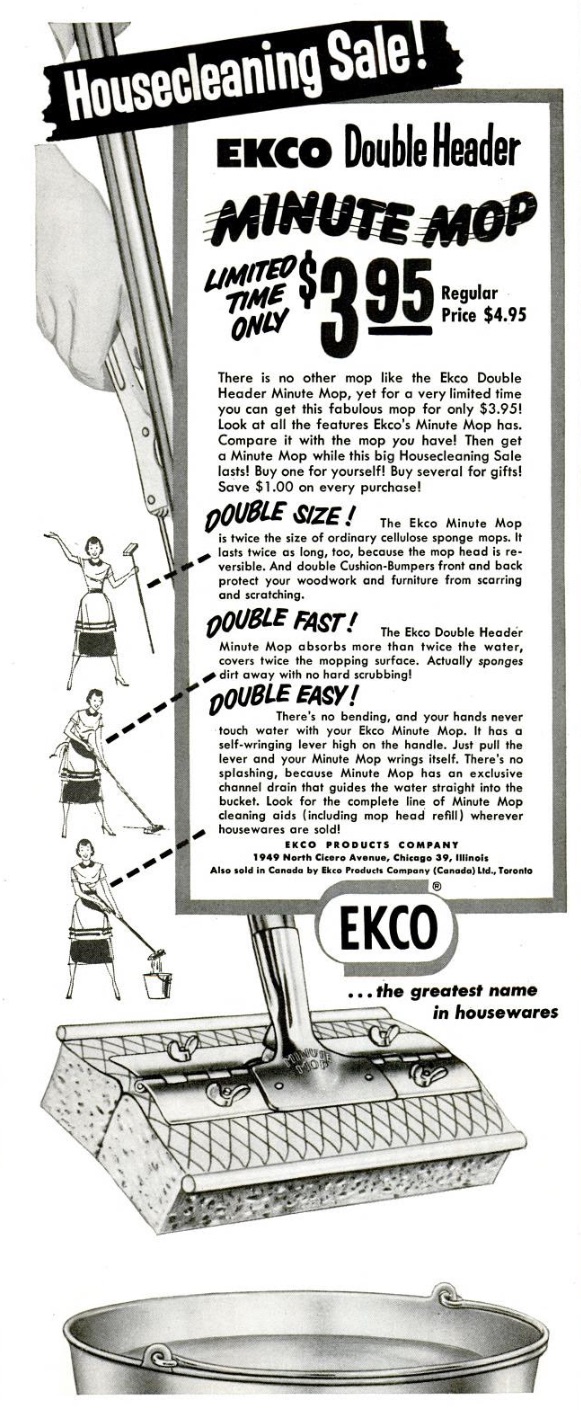
1927: August Maag Co. (Bakeware), Baltimore, MD
1929: A and J MFG. Co. (Kitchen Tools), Binghamton, NY
1934: Geneva Cutlery Co. / Geneva Forge (Cutlery), Geneva, NY
1943: Sta-Brite Products Corp. (Flatware), New Haven CT
1945: E.L. Tebbets Spool Co. (Rolling Pins), Locke Mills, ME
1945: Massillon Aluminum Co. (Cooking Utensils), Massillon, OH
1946: Murdock Metal Products, Inc. (Kitchen Utensils), Chicago
1947: Byesville Products Co. (Steel Tableware), Byesville, OH
1948: Bergen Forge Co. (Flatware Knives), Bergen, NJ
1949: Diamond Silver Co. (Silver Flatware), Lambertville, NJ
1949: National Glaco Chemical Corp. (Pan Chemicals), Chicago
1951: Minute Mop Co. (Sponge Mops), Chicago
1952: Republic Stamping & Enameling (Enamelware), Canton, OH
1954: Adams Plastics Co. Inc. (Handles), Holyoke, MA
1954: Autorye Co. (Bathroom Fittings), Oakville, CT
1954: McClintock MFG Co. (Pans and Containers), Whittier, CA
1955: Kilgore MFG Co. (Plastic Housewares), Westerville, OH
1955: Shore Machine Corp. (Ice Cream Scoops), New York, NY
1956: Kennetrack Corp. (Sliding Door Hardware), Elkhart, IN
1956: Ruby Light Co. (Fluorescent Lights), Los Angeles, CA
1956: P.R. Mallory Plastic Inc. (Bathroom Accessories), Chicago
1957: Felco Lighting Co. (Lighting), Dallas, TX
1957: Emro MFG Co. (Bottle Openers), St. Louis, MO
1957: Worley & Co. (Steel Lockers), Pico, CA
1959: Davis Rolling Pin Co. (Pins and Cutting Boards), Detroit, MI
1960: Washington Steel Co. (Door Hardware), Pico, CA
1960: Engineered Nylon Products (Molded Parts), Elkhart, IN
1961: Berkeley Products Co. (Closet Accessories), Jersey City, NJ
1962: Ekco-Aloca Container Inc. (Foil Containers), Wheeling, IL
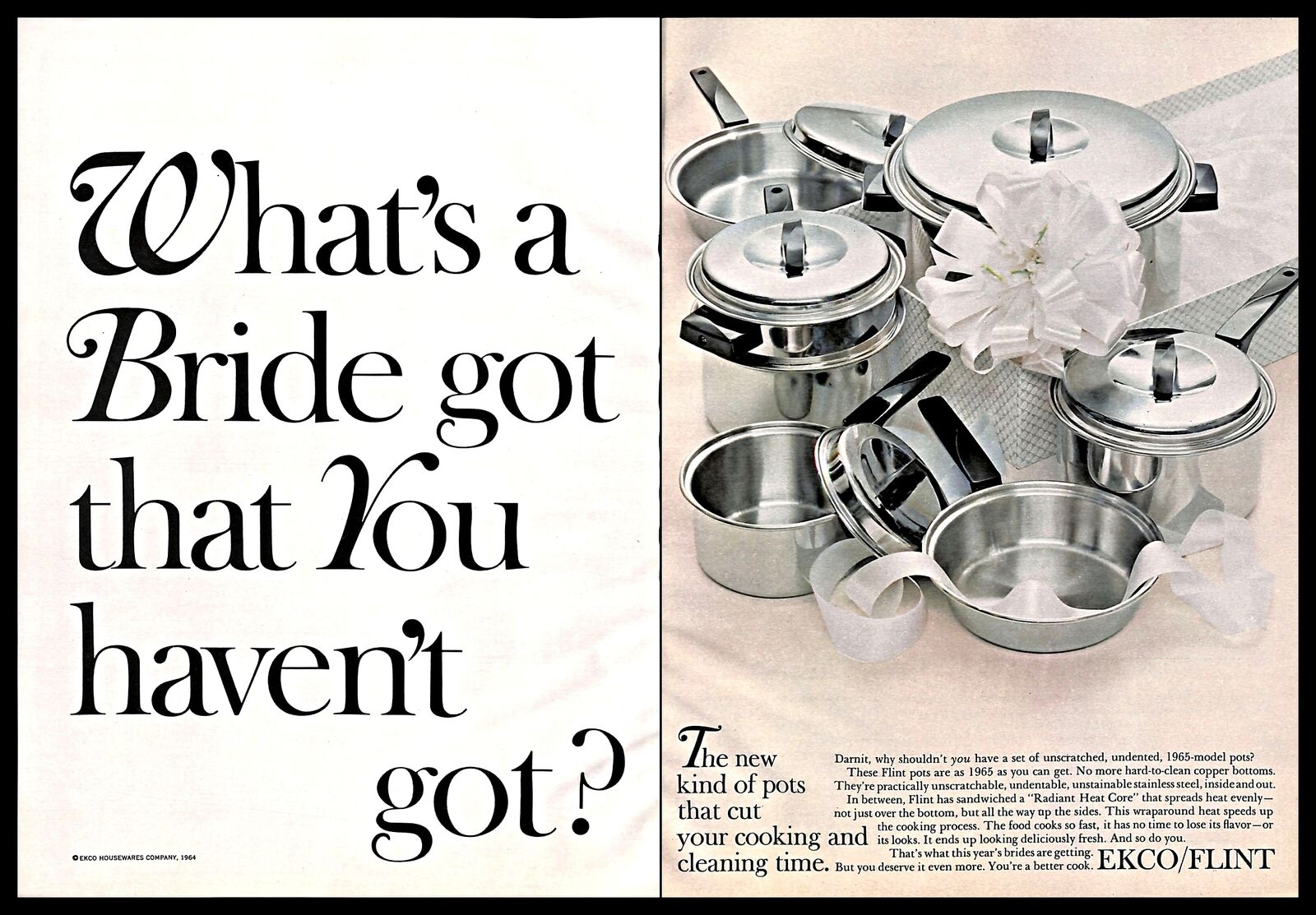 [1965 ad for “Flint” pots and pans, one of EKCO’s major brands.]
[1965 ad for “Flint” pots and pans, one of EKCO’s major brands.]
“King of the Kitchen”
According to a profile in Time magazine in 1952, Arthur Keating’s empire was now combining to produce more than 2,000 different products (almost one for every one of its 2,275 employees), many of them in streamlined, multi-color styles created by the country’s most famous industrial designer, Raymond Loewy; whom Keating had on a $75,000 salary.
Sold under brand names like A&J, Flint, and Ovenex, the EKCO arsenal brought in $35 million in gross earnings in 1951, moving 375,000 egg beaters, 10.5 million kitchen knives, 2.5 million rubber-ended bottle stoppers, 1.5 million pots and pans, and 12 million can openers, according to Time. In a lot of cases, individual households were purchasing these same items repeatedly in a calendar year—a phenomenon that didn’t surprise Arthur Keating. It was part of his business model.
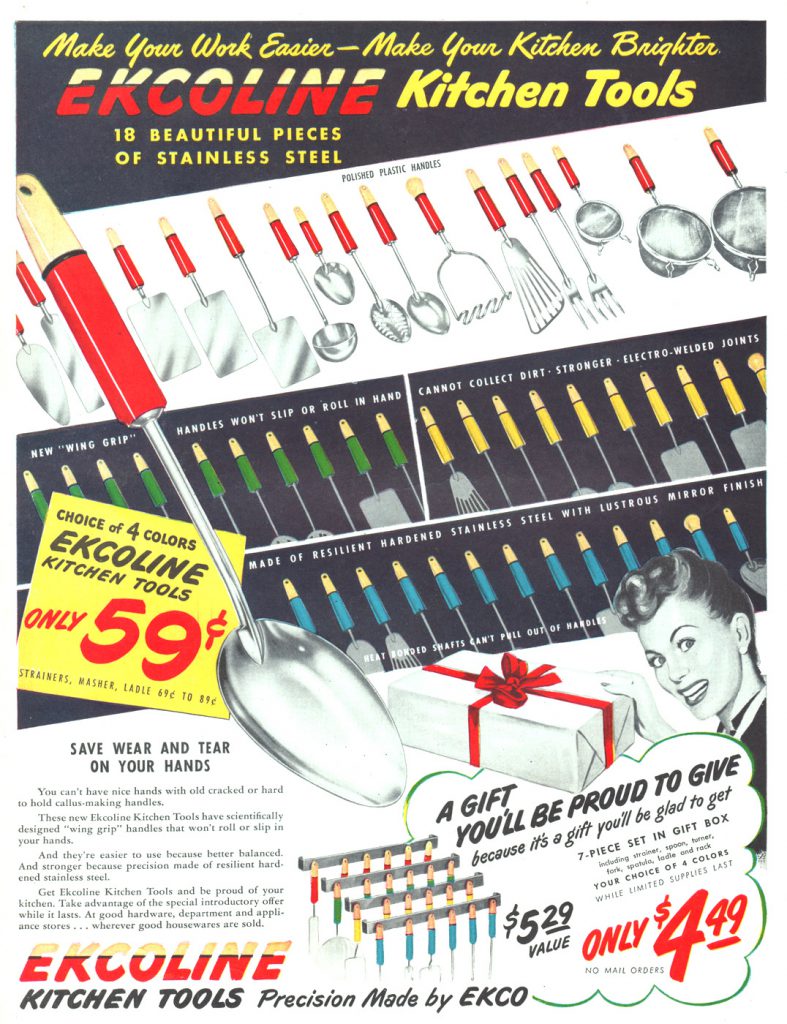 “A minor mystery to most U.S. males is the fact that housewives always seem to have room for another spoon or egg beater in their crowded kitchen cabinets,” reported the Time article. “But Chicago’s 57 year-old Arthur Keating solved the mystery long ago. As head of Ekco Products Co. and king of the U.S. kitchenware business, it is his job to make women want ever more household gimmicks. Keating estimates that nearly a third of existing gadgets disappear every year; they are lost in the garbage, carted away by children, or battered shapeless by amateur earthmovers in the backyard. Keating makes it is his business to put the rest out of date.”
“A minor mystery to most U.S. males is the fact that housewives always seem to have room for another spoon or egg beater in their crowded kitchen cabinets,” reported the Time article. “But Chicago’s 57 year-old Arthur Keating solved the mystery long ago. As head of Ekco Products Co. and king of the U.S. kitchenware business, it is his job to make women want ever more household gimmicks. Keating estimates that nearly a third of existing gadgets disappear every year; they are lost in the garbage, carted away by children, or battered shapeless by amateur earthmovers in the backyard. Keating makes it is his business to put the rest out of date.”
“They’re here now,” read a typical example of a mid-century EKCO newspaper ad, “new, wonderful and totally beautiful EKCO Products . . . housekeeping tools that make fun of housework . . . that replace old tired household tools with streamlined efficiency. Now your dreams come true!”
Rather than using nostalgia to sell can openers, as they would in the late 1960s, the 1950s version of EKCO was more in line with the era—forward thinking, space age, NEW NEW NEW. . . but still, lest it be forgotten, cheap!
“When a housewife doesn’t feel she can afford $200 for a dishwasher,” Keating told Time magazine, “she will still spend 15 cents for a new potato peeler.”
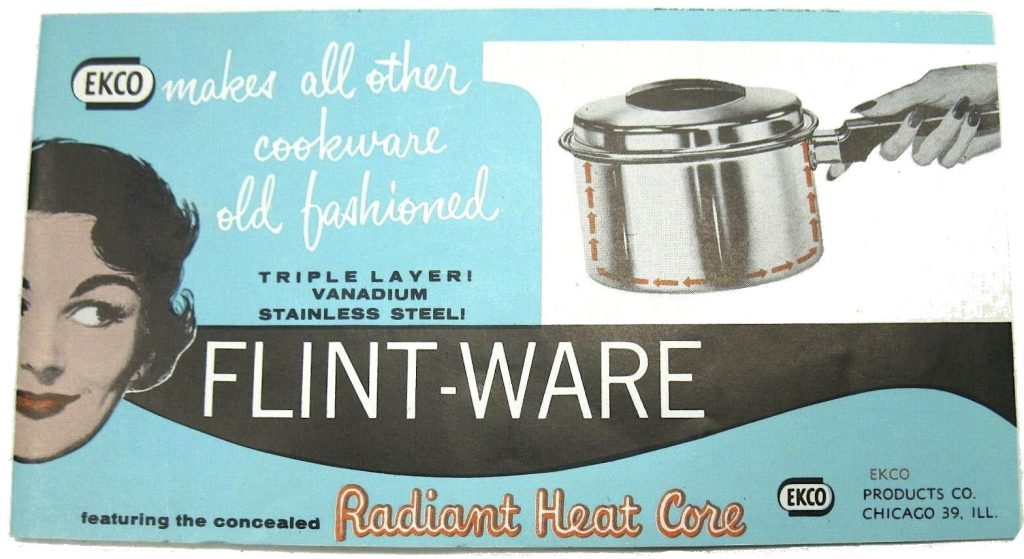
This same philosophy, in a way, applied to EKCO’s commercial clients, such as Swanson—creators of the first iconic “TV Dinner” packaged meals.
“The early ‘50s was an exciting time in the foil container industry,” says former EKCO engineer John Duskey, whose father Edmund Duskey was part of Keating’s engineering team during the era in question. “In the first half of the twentieth century, metal containers such as pie plates were made in multiple operations: blanking and forming, curling and finishing. If this could be done in a single operation and put into production, there would be substantial cost savings for customers, and substantial sales increases for companies doing the stamping.”
According to Duskey, this challenge was of “particular interest” to an aging Arthur Keating, who was still a mechanical engineer at heart.
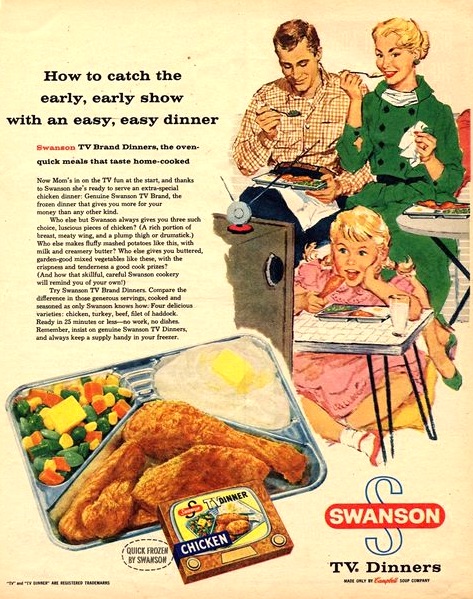 “Nobody knows for sure who was the first to make a single-operation foil pie plate, but it is certain that Arthur Keating was able to convince the customers that the curl should be half-above and half-below the flange,” Duskey says. “Ekco became the leader in promoting and selling these containers in the early 1950s, and once the standard specifications had been developed, the more costly tooling for square and rectangular containers, including the TV Dinner plate, could be built.”
“Nobody knows for sure who was the first to make a single-operation foil pie plate, but it is certain that Arthur Keating was able to convince the customers that the curl should be half-above and half-below the flange,” Duskey says. “Ekco became the leader in promoting and selling these containers in the early 1950s, and once the standard specifications had been developed, the more costly tooling for square and rectangular containers, including the TV Dinner plate, could be built.”
As one result of that success, EKCO formed a corporate partnership with the Aluminum Company of America (Alcoa) in 1955, creating Ekco-Alcoa Container, Inc., complete with its own dedicated plant in suburban Wheeling, IL. By the time EKCO subsequently bought out Alcoa’s shares in 1962, the newly renamed EKCO Containers subsidiary represented 13 percent of EKCO’s overall business. The Cicero Avenue factory, still focused on the usual kitchen lines, became the HQ for the also newly minted EKCO Housewares Co., which opened a Franklin Park facility shortly before the sale to American Home Products in 1965.
Arthur Keating, though technically retired, took a place on the board of American Home, but he never really saw the ultimate consequences of the deal. He died in 1967 at age 73.
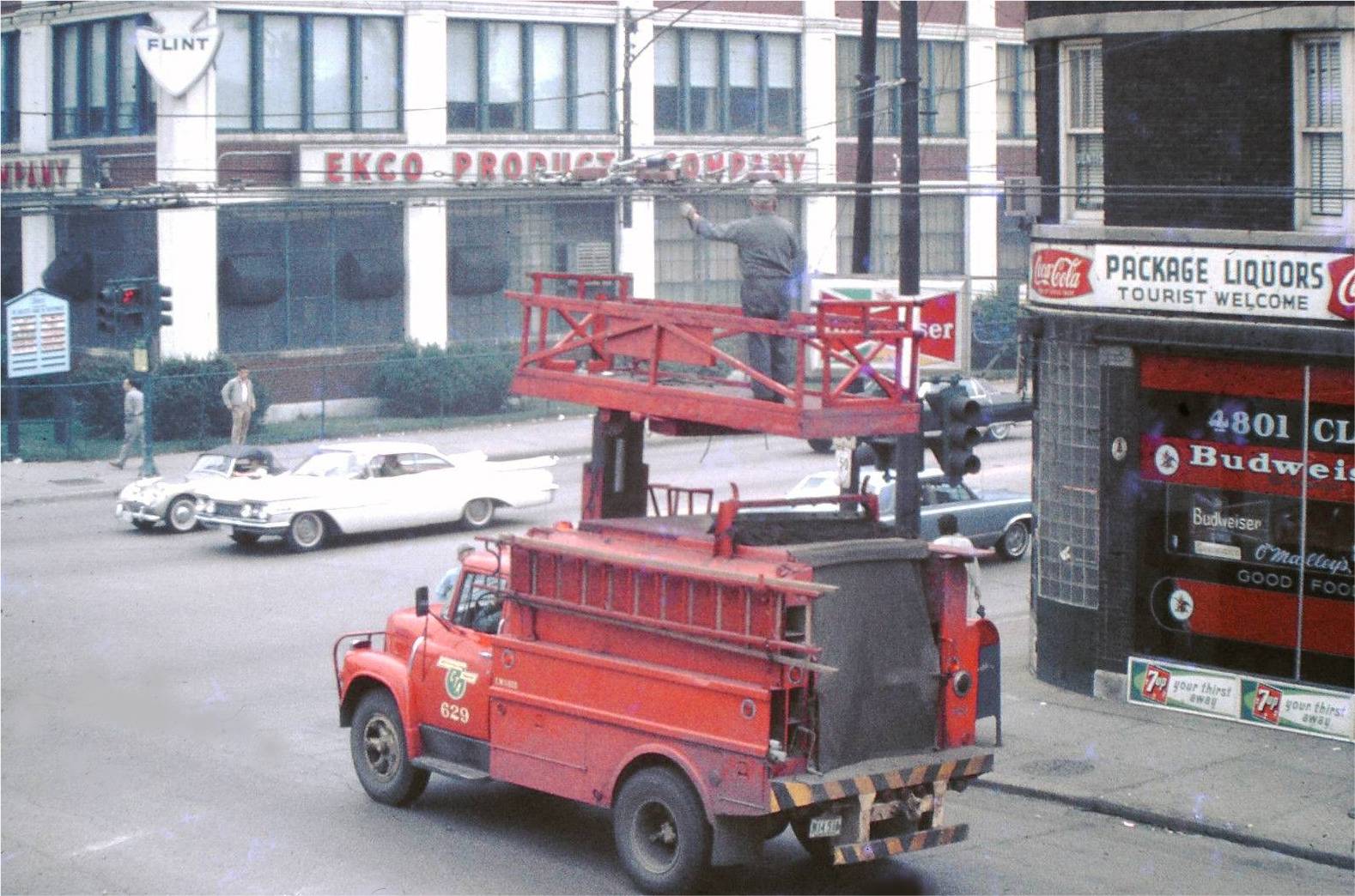 [Glimpse of the EKCO factory at Cicero Ave. and Armitage, c. 1965]
[Glimpse of the EKCO factory at Cicero Ave. and Armitage, c. 1965]
After the Sale
In EKCO’s final year of independence, in 1964, it had posted record sales of $117 million with $7.6 million in earnings. And while a merger/buyout with American Home Products might have made the company’s Chicago-area employees uneasy, it didn’t spell instant doom by any means.
“In the sixties, American Home was a diverse conglomerate which sold a variety of household products—everything from Chef Boyardee to Aspirin tablets—so it seemed that EKCo would fit into their product lines,” says John Duskey.
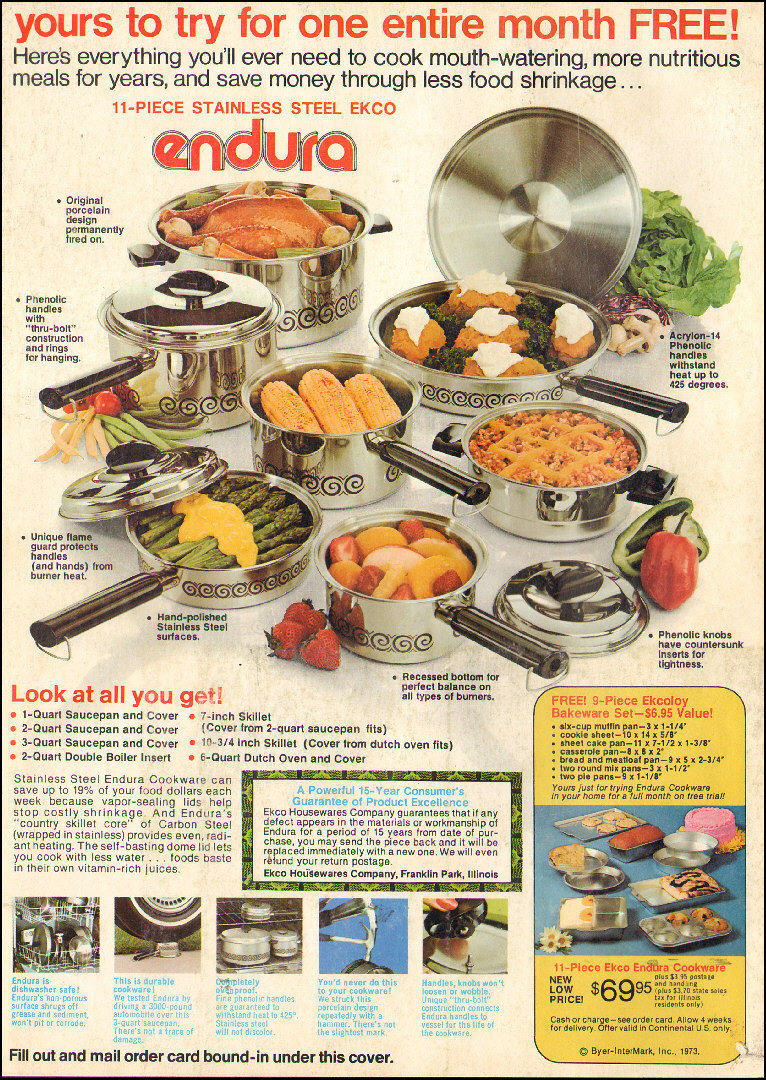 “EKCO was an interesting place to work in the ‘70s and ‘80s. Fred Alexander had assumed the position of manager of manufacturing engineering in 1964. He led a team that included new product design, tooling design, and the toolroom. That toolroom was continually busy maintaining the existing tooling, and building new tooling for many new product ideas that had turned into actual production items. The company also entered the field of ovenable paperboard containers and plastic containers. Many different types of tooling were built, all according to the same design standard developed back at the old plant at Cicero and Armitage in the early 1950s.”
“EKCO was an interesting place to work in the ‘70s and ‘80s. Fred Alexander had assumed the position of manager of manufacturing engineering in 1964. He led a team that included new product design, tooling design, and the toolroom. That toolroom was continually busy maintaining the existing tooling, and building new tooling for many new product ideas that had turned into actual production items. The company also entered the field of ovenable paperboard containers and plastic containers. Many different types of tooling were built, all according to the same design standard developed back at the old plant at Cicero and Armitage in the early 1950s.”
EKCO’s housewares division was divided into three operations in 1972: Ekco Products Inc., Ekco Housewares Co., and The Prestige Group Limited—which was the evolution of the old Platers and Stampers LTD in the UK. All three divisions were still productive and profitable into the 1980s, but increasingly detached from American Home’s growing focus on the pharmaceutical market.
In 1984, each division was unceremoniously sold off—EKCO Products to Tenneco Inc., EKCO Housewares to a New York investment banking firm, and Prestige LTD to American Brands, Inc. Still based in Franklin Park, EKCO Housewares seemed poised for a new golden era under the leadership of a highly ambitious new director, a Dane named Finn Schjorring, who vowed to “reestablish the company to its former glory” by contemporizing its kitchenware designs in the European style. The plans were implemented, but the rest of the world had long since caught up to the sales tricks that Arthur Keating had introduced back in the day.

[Notice that the newspaper editor misspelled the company name in the headline and opening sentence. No wonder they left town!]
With plants starting to close, EKCO Housewares was sold again in 1987 to a computer printer maker called Centronics Corp., which then re-organized as EKCO Group, Inc. The company remained a leading bakeware seller and diversified its properties, but much of its workforce was either moved to Mexico or just eliminated outright.
In 1992, the remaining 170 employees at the old factory at Cicero Ave. and Armitage were let go, ending EKCO’s century-long run in the city. The Franklin Park corporate offices remained in operation into the new century, but have since been abandoned, as well.
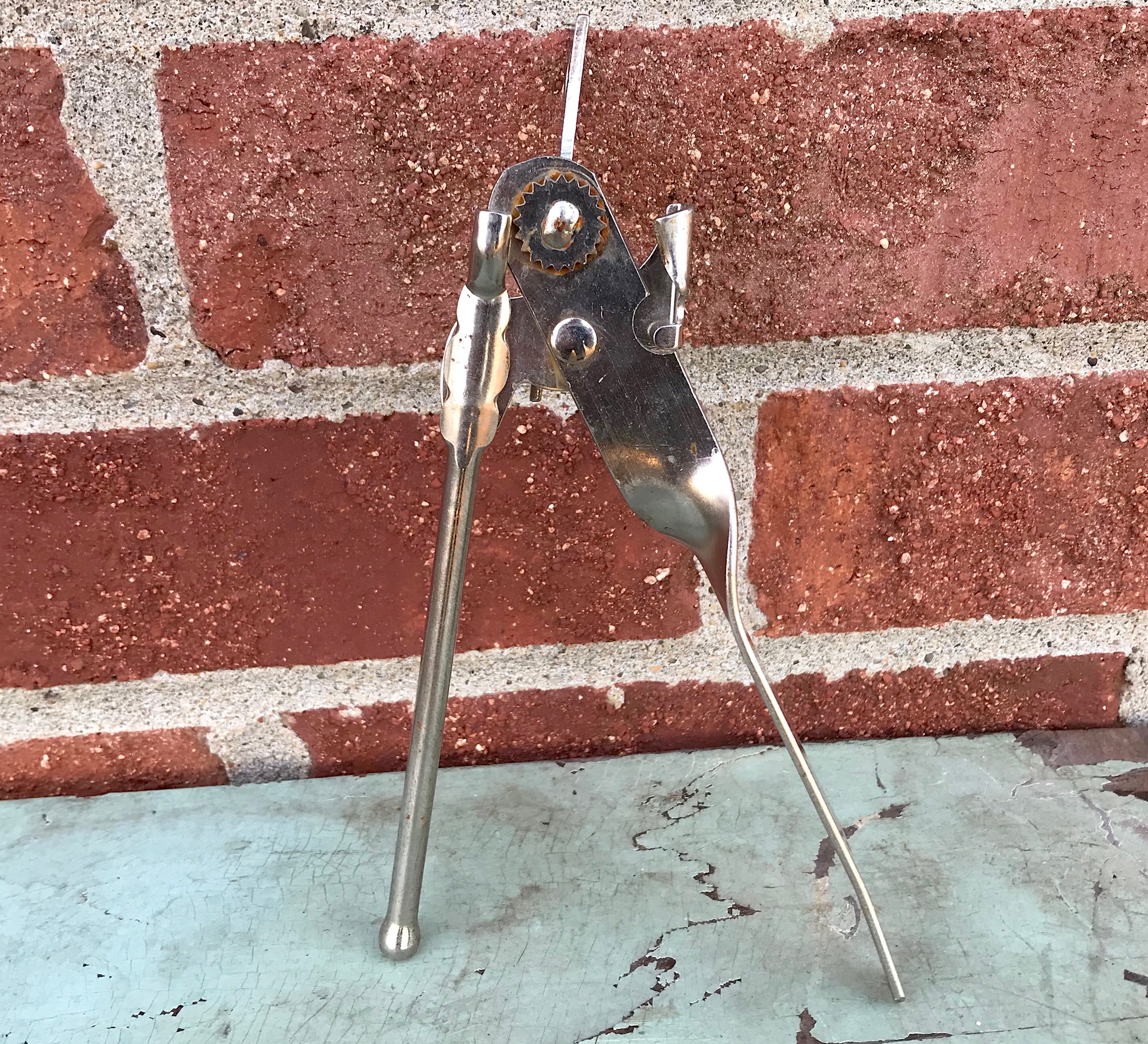
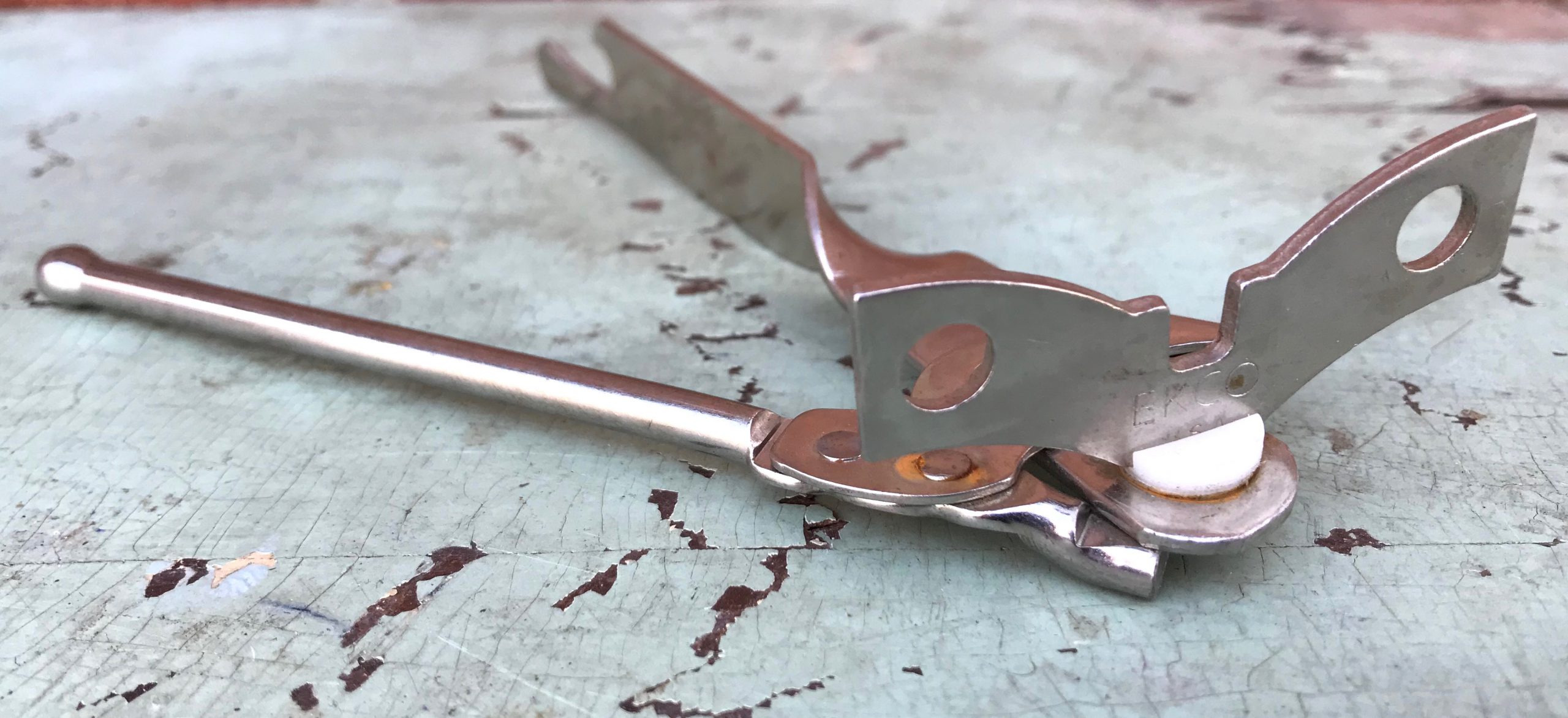
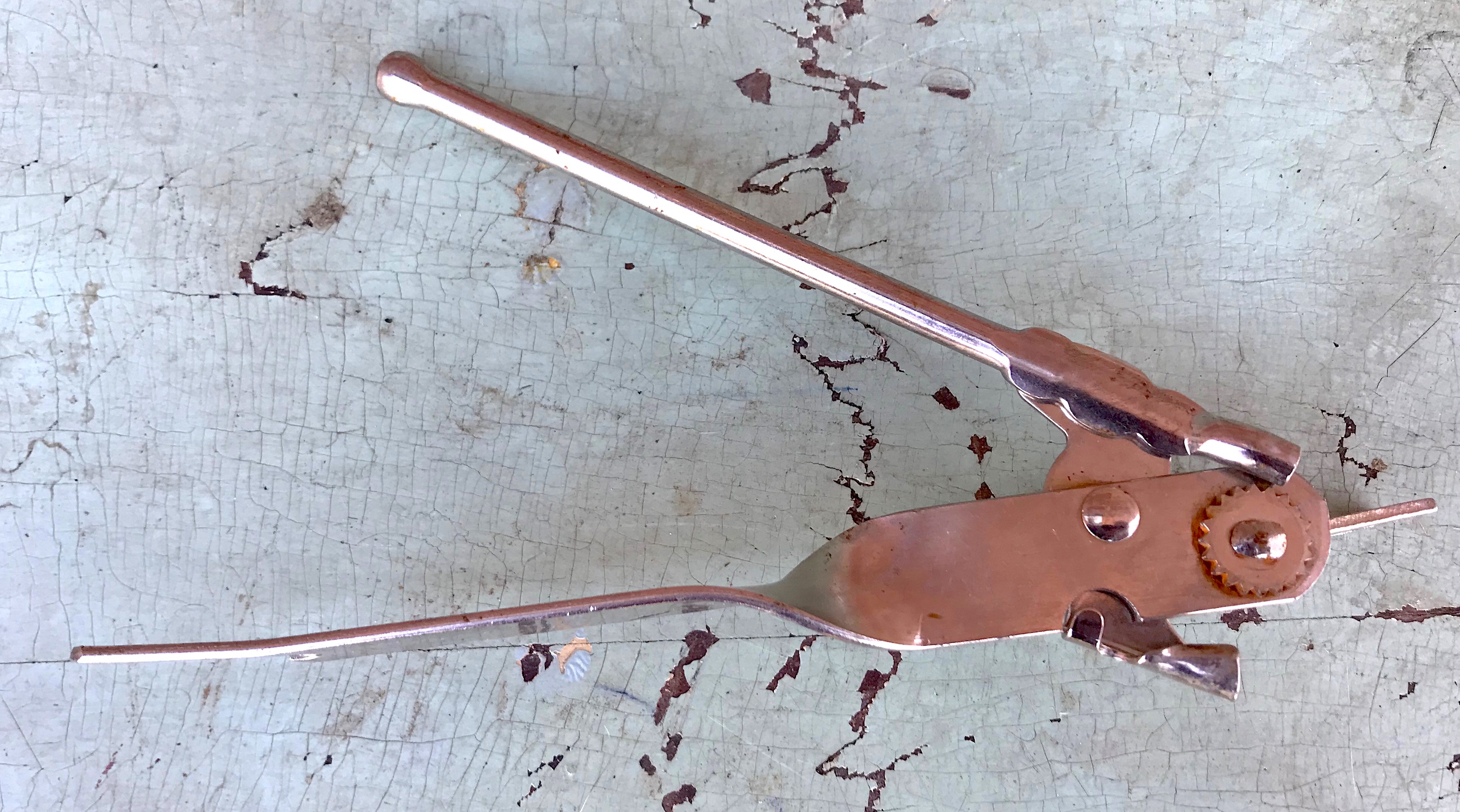
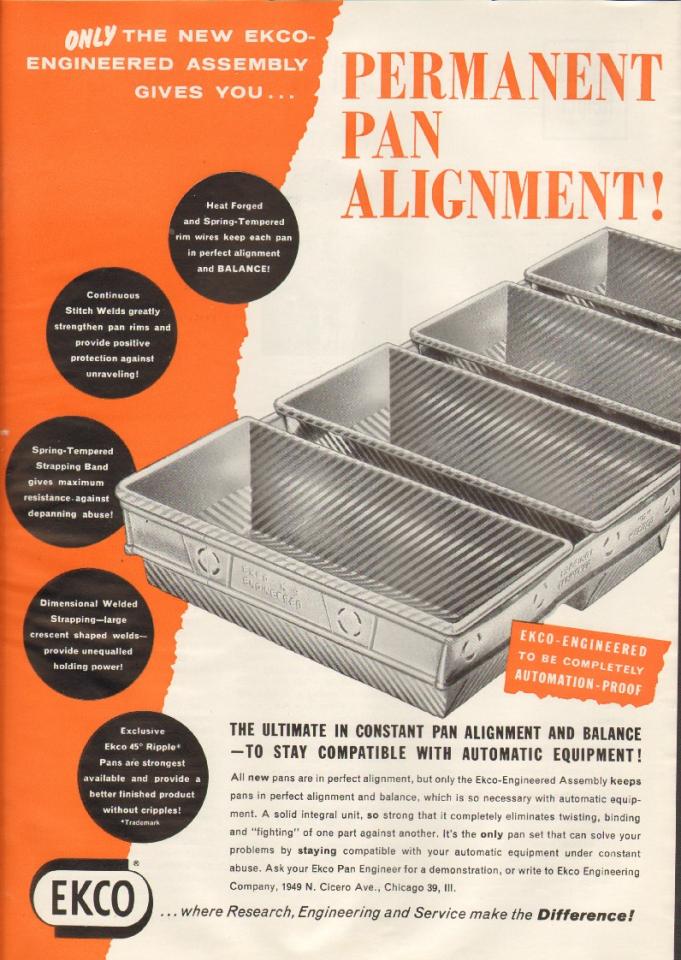
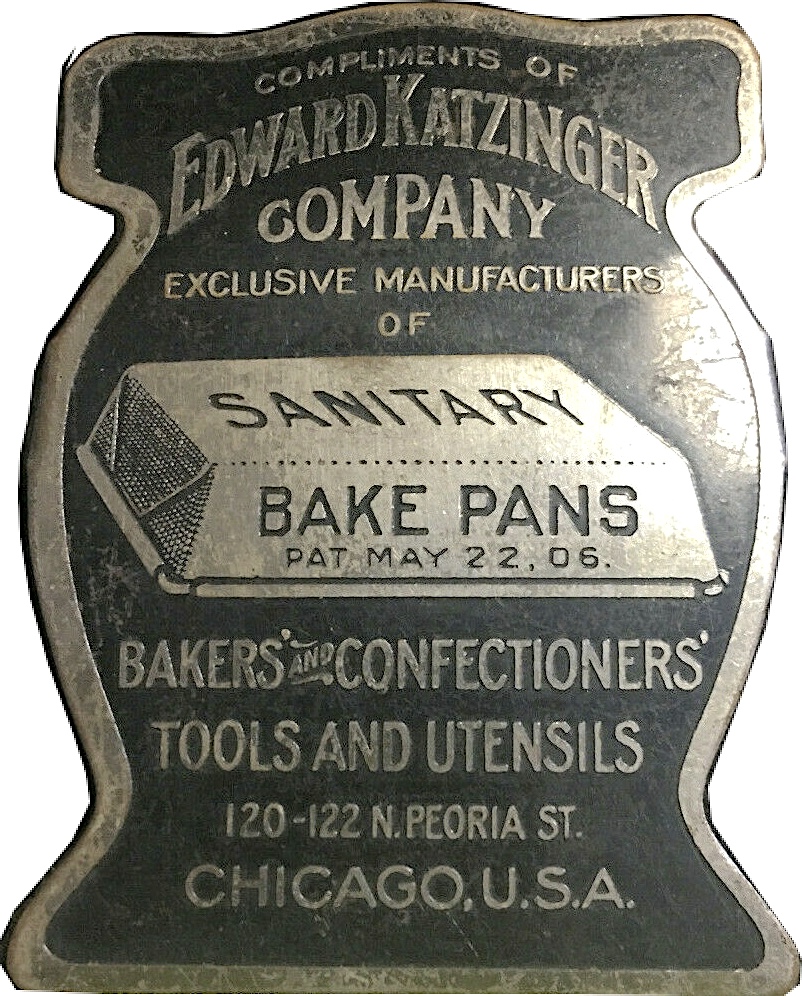
SOURCES:
“Never Any Doubt of Keating’s Business Aspirations at Ekco” – Chicago Tribune, July 17, 1961
“King of the Kitchen” – Time, May 19, 1952
“Don’t Fall In Love With Your Product” – Fortune, October 1949
International Directory of Company Histories, Vol. 16. St. James Press, 1997.
“International Industrialist Keating Dies” – Chicago Tribune, Dec 13, 1967
“Ekco Shutdown to Affect 170 Jobs” – Chicago Tribune, Jan 13, 1992
“Pans for the Baker” – The Northwestern Miller, Vol. 127, No. 13, Sept. 28, 1921
Ekco Housewares ad – Binghamton Press, April 22, 1947
The Housewares Story: A History of the American Housewares Industry, by Earl Lifshey, 1973
Archived Reader Comments:
“Very enlightening. My wife and I were just looking at the little 18X12 Ovenex baking pan that I’d just dirtied up. She said it was an antique, so I looked it up, and boy what a history.” —Martin Weaver, 2020
“It is Passover and we take our Passover kitchen items out of storage to use for the 8 day holiday. Among these items are EKCO cooking and serving utensils and can openers that I inherited from my grandparents. They are in pretty good condition. They are metal with wooden handles painted red and some with off-white accent bands. I remember my grandparents using them when I was a child in the 1960s. They trigger happy memories and are fun to use with my millennial kids. I enjoyed reading about the history of the EKCO corporation.” —Donna, 2020
“I found your story very interesting. I have an aluminum Edward Katzinger company commercial baking pan that I think is quite old. It says Chicago – Baltimore made in U. S. America, number 6207. So I guess it’s after 1927, as I read they bought a Baltimore company that year. Funny, I have not used this baking pan in years. It was my fathers, who worked in a commercial bakery in Brooklyn New York, and my father died in 1958. I live in New York City, and we have been on lockdown for four weeks, so we have time to notice things we never did before. Be safe, be well.” —Marge Giacalone, 2020
“I’m trying to replace EKCO EKS20 that my mother used back before 1960. Being the child of depression marrying parents, I am constantly trying to fix or replace items from my past. Because Ekco is not on the flatware, most people don’t know that Ekco made it. I believe in the old saying “if it ain’t broke, don’t fix it”. Wish companies adhered to that saying. Any chance, that old patterns of flatware will have a ‘REVIVAL”???” —Margaret Sims, 2020
“There is no mention if the EKCO co. had Unionized employee’s. I lived block away from this plant and sold ice cream to its employees on break. 1953. Eskimo Pie’s . . . I lived at 4855 west homer st. Attended Henry Lloyd elementary school, block away. . . .ps, The old EKCO building is gone on Cicero, armitage. There’s a Home Depot there now. go figure!” —Vic Sedo (Edmonton, Canada), 2020

My mother passed away recently and within her kitchen drawer knifes she has a very weird looking vintage ekco Flint stainless steel vanadium U.S.A. knife that has 2 prong point tip, serrated on one side sharp smooth knife on the other side and right down the bottom is a bottle opener carved into the blade and I cannot find anything on this. can anyone help I have photos of it if you need to see because I cannot find any images online in regards to it. When I do the photo Google search it comes back with… vintage Ekco Flint stainless steel vanadium serrated slicing knife, likely for bread or ham, with a bottle opener near the handle. No other information is available so can someone please help me identify this and let me know what it’s used for and if it is worth anything it’s in great condition
Anyone know anything or what year the 3 prong meat fork came out from ekco as I have one and am trying to find out information on it but can’t find anything… It has a wooden handle with 2 pins in it and a widen bottom at the very bottom of the handle
I was online looking into another product from my childhood, Siegler gas stoves, when the company’s promotional cooking products popped up, made by Ekco. My folks bought two Sieglers for our two-flat in Cragin around 1955, but I don’t remember my mom having any Siegler-branded cooking spoons (like the two I just bought on eBay) or other utensils. I’m sure I have that can opener, however. And we got all sorts of samples of new Ekco products from a neighbor who was a secretary there for years. It was a short walk for her from our block on Lawler to Cicero and Armitage. And a shout-out to Vic in Edmonton–I went to Henry D. Lloyd too.
72 year old set of Ekcoware “stainless steel with thick copper bottom” pots and pans is still in perfect shape! Okay, my mother managed to burn away a little of ONE of the handles, which is still snug and strong. Must have been Ekco’s good stuff, not their cheap stuff. Amazing design and quality!
Do you know where I can find more information on the design of the ECKO manual can opener? I’m seeing at least three different butterflys out there, and was wondering when each would have been produced.
I believe the ones with the large open holes on the “wings” (not the medium holes) were early versions as there is no part number stamped on the tool, just a very long patent number.
Hi there, I’m in Toronto. Today, I found a triple heart cake pan, all attached in a metal frame. This pan must have been used in a bakery, or some industrial use as it wouldn’t even fit in a conventional oven. I’m wondering if anyone has seen these before?
I have collected a few Ekco tins that hang in my kitchen as artwork. In particular I like the cupcake muffin tins. My fluted 16 well cupcake tin #1688 is a favorite. I am curious if it was intended for specific recipes.
I have an Ecko 8 muffin pan – ” 8 surrounded by the words” Ecko Chicago Pat. Pend”.. Would like to know the year this was made given it was ‘patten pending”. ,The pan is a smooth finish, no starburst or waffle designs.
I have an EKCO egg beater hand held mixer.
The black handle has the EKCO brand but does not have “Best” on the opposite side. I commonly see these mixers referred to as EKCO BEST mixers. Do you know why my particular mixer only says EKCO?
Thank you for any info.
I have 2 pristine Ekco Glaco gold 17×11 baking sheets. Do you have any idea when they were made. A family member worked at the Cicero and Armitage plant from approximately the late 1940’s through late 1970’s. I was going to donate them to a Church rummage sale, but now I’m re-thinking.
WE are working to narrow down our kitchen goods. Came across almost new set ot ECKO FLINT knifes and utensils. A GREAT FIND ! We thought of selling the entire set. NOW KEEPINT ALL !
Exceptional condition and appearance. The carving and steak knifes are sharp !
I am considering using my grandparents old Ekco flatware. It is still so shinny, so it makes me wonder if anyone knows if the company ever used Chromium to finish their knives/forks/spoons? (in which case, you would’nt want to use them).
I am considering using my grandparents old Ekco flatware. It is so shinny, I’m wondering if anyone knows if the company ever used Chromium to finish their knives/forks/spoons? (in which case, you would’nt want to use them- along with stamped flatware or silver/silverplate, too often).
I have an Ekco one piece white plastic measuring spoon. It’s probably from the 60s or 70s. I have looked EVERYWHERE in the internet trying to find another one, and have found NOTHING! Can anyone help me with my search?
One end measures one tablespoon, and the other side measures one teaspoon. At the other end of the measuring spoons the measurements are ½ tsp & ¼ tsp. The measuring parts are more rectangular than oval.
I have The Giant No 120 candy furnace can you tell me approximately what yr they were made and a value.
Dear, sir. I would like to contact the home office of Ekco Products or their new owner. I have a framed drawing that should be in there historical archives. Please give me a contact phone number I can call so that I can talk to someone about sending this part of History to the company.
I just bought 3 Ecko Flint Vanadium steel kitchen knives at a resale shop in North West Arkansas. The knives are about 10 to 12 inches long with wood handles and have finger groves. One blade is serrated. They appear to have never been used or sharpened. The blades are shiny bright and look new and the handles look factory new without a mark. The bolsters are stainless and tight. The blades are vanadium alloy. I have a lot (many) of resale shop Ecko knives but never ones that look unused and factory fresh. I buy every Ecko knive I find and am very happy to find another one. I have tried sharpening a few but they seem to be as hard to sharpen as my 60 year old Buck 10 inch heavy duty hunting knife. Any thing you can tell me would be appreciated. I know there are different materials used in forging stainless alloys that have different hardness levels and different surface shine characteristics. I have bought a lot of “good” resale shop knives but Ecko Vanadium Flint Knive have always been my favorite. It looks like my appreciation for high quality stainless steel steel was right on with Flint Ecko Vanadium Knives. Thank You
HI – I found an old crimpled bread pan ( makes round loaf of bread has top and bottom with hinges) Can you tell me where or who would have recipes to make in this pan? I know they made swirled cinnamon bread in it, and swirled pumpernickel Rye bread but I have had no luck finding recipes they say came with this pan. Kin Arthur Flour Company used to sell it but I have called and asked if they had recipe archives for this pan and so far no one has gotten back to me
What is the model number / size of your pans? ECKO made a J-95 that was the same size (10×3 1/2) as the current Chicago Metallic/Bundy version. I have been searching for information about an older (I think) incarnation, the 1063. It is more like 4 1/2 x 14. While I have seen other examples of the J-95, I have never seen any other 1063 — besides the two sets that I own. If you would like a (in my opinion) superb recipe for cinnamon bread to bake in these pans, just contact me at dzipple@bellsouth.net. It is a remarkable coincidence that although I have had the larger pans for at least ten years, the accumulated filth and degraded glazing had discouraged my actually using them until about a week ago. The experience has also led me to another service that I never knew existed — cleaning and reglazing of baking pans. I am having that done now. Again; I have used the Chicago Metallic 48514 with great satisfaction for many years.
I have a no.2 ekco 54 bake pan . What year is this one? And do they come apart ? And mine doesn’t have waffle or grid it has circles (5) on bottom .
I worked there in 1979 as a material handler. Started in dept.10 and ended up in dept 29 on the first floor. I believe dept 40 was in the back of dept 10. Archie was the set-up man/lead man in dept 10. That place was so hot, they had salt tablet dispensers on almost every pillar. Made 5.28 cents an hour with a 10% more shift differential for working second shift. That was good money considering 2.90 an hour was minium wage for that year. Great place to work, made many friends.
I started there in 1978 in the tool room. I remember Dept 10 assembled can openers and peelers and strainers. Benny was the Foreman for that department.
I came across all these comments about the Ekco products, especially the 885 and 884 can openers along with the potato peelers. I worked at the Cicero & Armitage factory from 1978 untill about 2017 when the Ekco Line was discontinued. Ekco had been bought along with many other brands in 2000. There’s been so many changes. I’m 1 of 3 Ekco Factory employees from 1978.
EKCO will always have a place in my heart. I spent almost all of my working career working for it.
Such a great article to educate us about the past. I’m pretty sure my mom has the miracle can opener that we used alot growing up. 10 or 15 years ago I purchased a small grey silicone mat with the word EKCO on it in big letters, and I always wondered what kind of company it was. But plot twist: there’s another company called ekcobrands that is the US division of a Mexican company, and it’s actually that company that made the mat and not the original Ekco. So there’s Ekco, the British electronics company, US based Ekco which split into three, (anyone know what happened to the Tenneco and American Products divisions), and Ekco Brands owned by a Mexican company. Not confusing at all!
j ai un melangeur rotatif a main avec le bol de verre avec bec verseur no7216 pat no d- 110899
le produit est til un objet rare
I have a cast iron pot with a plunger. in the middle of it. Bought it at Goodwill for $15.00. Says Ekco on one side and Chicago ,IL on the other side. I’m trying to figure out what it is
My mother gave me a set f 3 large Ekco spoons. She used them for over 65 years i am still using them today, They originally had red wooden handles, the paint has since worn off. I had 7 brothers ad sisters so these spoons were used frequently,
They are still in great shape and I also use them a lot.
I plan to pass them along to my 3 daughters.
we have an Ekco Evergreen Christmas Tree Stand “holds extra large” for sale if anyone is interested. it’s in the box and appears unused.
if interested : alliewallace1@hotmail. com
I brought the pots and pans when I was 20 years old, I use them still and I love them! When I bought theses pans they had a 50 years guaranteed, is this still valid? My handle on 1 of the pans has become loose, at the time I bought them they told me it would be fixed or replaced, I tried to tighten it, but the screw holding to handle on will no turn. Who do I contact after all theses years? Someone remarked what do you clean them with, I have always used baking soda!
I have three Ekcoloy slide cake pans. Bought them used in the 1970s, used them this morning 🙂 Great pans.
I have 5 2/3 3 2 1/3 bread pans U.S.A and they have some rust on them . How do I clean them up and how do I keep them from rusting again. And store them? Thank you!!
I too have the Elko prestige cookware set and I need a couple of pieces replaced, how do I go about sending them to you?
The 884 has a can piercing at the end of it. The 885 has a bottle opener at the end. Other than that all the other components are the same
I have an 884 can opener. It is in still perfect working condition. Do you have any background on this can opener. Just to be clear this is not the 885.
We brought the.Ekco stainless steel cookware and the 5 set if Arrowhead knife set in 1974. The handles are showing heat damage and the lids knobs are also showing heat damage on the SS pots. The knifes need the blades Sharpen or reshaped. We use them daily. Please advise if I can receive handles and knobs and have the knifes reworked.
As noted in the article, the EKCO company no longer exists. This is an article about the company’s history. We’re not associated with the business and cannot supply replacement partts.
I have an Ecko product of knives and would like to know something about them, like year? worth? etc,,,i have picture of box and set its a 5 piece culinary set of knives,
I need a replacement pot and lid for Ekco brand cookware. It is the Prestige collection. The handle fell off, and it has a lifetime warranty.
My Dad, Ken Petrine was VP and General Counsel when Ekco Housewares when they closed the Franklin Park office. Thanks for a great story!
I’m finding vintage hand mixers branded Oekcoo, which seems like a riff of Ecko. Any idea what is the distinction? Thank you!
I started there in 1978 in the tool room. I recall the name Andrew Andler. I remember working on the tools for Top Drawer.
When the plant closed we threw away all the tool drawings that were in the flat file drawers. It was heart breaking.
Great work on this corporate history of products, people, and properties. I was hired at the Cicero Ave. plant as an entry-level draftsman in January 1977. My boss was named Dick Adams and his boss was Andrew Andler. We designed all the new tools for the new Top Drawer line and oversaw how those dies worked inside the headers and presses and four-slide machinary. It was an awesome experience, and one I shall never forget.
These corporate mergers always seem to go in the same direction and never follow the path that made the enterprise successful from the get-to.
I used to have two of their spatulas. One was a little shorter than the other. They were the very best spatulas I ever had and lasted like 35 plus years even after my husband used one on the grill (I could have killed him!!!). These spatulas are the most reliable for not breaking my dipping eggs when I flip them and were also good for removing cookies from the baking sheets. I probably burnt the short one years ago in the oven and just recently I had electrical issues and the electrician was coming right over. I had just made my daily dipping eggs. Well, I hurried up and put the pan and spatula in the oven to hide and forgot all about it. I never usually put anything in the oven to store. I went to preheat the oven for a pizza and killed my spatula. I wanted to cry!!! I have been looking and trying new fangled spatulas for years and I hate them. They just aren’t the same. ..too much flex, no flex, wrong texture etc. Fortunately, I was able to find one on ebay. I could not believe the price!!! Apparently, everyone else realizes how awesome these vintage pieces were!!!
I need a rubber gasket for a ekco 2.5 pressure cooker.
Up until about an hour ago, I had an EKCO Miracle Can Opener 885. It was my mother’s (maybe my grandmother’s), I’m 63! It finally broke! This is a true testament to the quality of the EKCO products.
Anna and Sidney died of influenza per notice in Kansas City Times
Thank you for this. –MICM
Dear Sir,
I recently purchased an Ekco cake stuffer. I believe it was used to put filling into
doughnuts. can you give me any information on the date of manufacture?
Thanks,
Jerry K.
Found a mother’s oats box my mom (93 yo) has recipes stuck in. It advertises that a pc of Ecko kitchen Ware comes in the box. I was wondering what dates Ecko gave the utensils in Mother’s Oats. Just curious to know how long my mother has kept that box. I’m pretty sure she still has a pc or so of Ecko utensils. I think some of her old cake pans may be Ecko also.
In 1970 I purchased an EKCO potato peeler (Patent # 2232940) and have been using it ever since. The blade turned black many years ago, so for esthetics, I purchase a newer one made by another company–it fell apart after a few uses. I bought a different one by someone else–same story. Bottom line–I am still using that EKCO peeler. I think it cost about 49 cents!
I am using a muffin tin that my grandmother and mother used. It is marked Chicago Ekco 1080.
I 80 plus years old so it has been well used. Can you tell me what year it was manufactured?
I do have quite a lot of cutlery from Ekco, supposedly the CANOE MUFFIN pattern. Some of it is marked as Ekco JAPAN stainless steel. In your history of Ekco I don’t see any aquisition of a Japanese company or any such subsidery. Do you have any explanation for such a mark?
I still own, and use, my set of Ekco endura cookware purchased in the late 60’s. The Dutch oven doesn’t sit well on the glass top stove but, the other pieces are fine. It was so interesting to read this article, thank you!
I have an old cast iron lamp (Baker’s lamp ??) in excellent condition that is marked on top Mf’d by E. Katzinger—Chicago—would love to attach photo’s but don’t see a place to do so, but would also love to have any info I can get on this item, I said Bakers lamp as that was what I was told from previous owner when I acquired it, please advise and THANK you much. Jim 14jimjprdan@gmail.com
I just purchased a set of Ashcraft stainless steel, tri-ply cookware at an estate sale. I would like information about them, when and where made, care, can they be put in the oven, etc. Thanks!
My 89-year-old mom has an Ekco Flint Vanadium stainless steel tomato knife with a serrated 4-1/4 inch blade and a wooden handle. She’s had it for as long as I can remember, uses it almost daily, and it still slices better than any other knife that I have used. The blade is still shiny without a single speck of rust…incredible!
I am the great grand daughter of Edward Katzinger and granddaughter of Arthur Keating. I am one of six girls who are his great granddaughters and grand daughters. We all remember the plant at 1949 N. Cicero Ave, Chicago.
Both men were great industrialist and changed the kitchen and beyond forever.
My grandmother left me her prized 6 pc knife set. It hung in her kitchen in its original wood holder. All the knives are still in excellent condition and get used almost daily. Sadly thought one knife has been used too much and the blade needs replacing. When my husband used it last and went to sharpen it chips broke of the cutting edge of the blade. Other than that the handle everything is like new. I love them because of the thumb and index finger indents in the handles make them so easy to use as I have severe rheumatoid arthritis. I wish I could get the blade replaced. What an amazing wonderful American story. This is what America is all about, building and living the dream.
I have a full set of EKCO Pots and pans (Waterless Cookware). This was purchased in 1975 from a door to door salesman, and it still looks like new. The only part that needs replacing is the Auto-Temp valve in one of the pans. These had a 50 year Warranty, but if not made anymore !! Still use these pans everyday.
I have a muffin pan, that I just love. It says Oven Ex
N-80-8. And on the opposite end EKCO USA. Just curious how old it is.
I had the Lid Flipper which has been in my kitchen draw many years. I was having trouble opening a jar and was looking for something to flip the lid to relieve the pressure so I could open jar. When I saw the Lid Flipper I gave it a try, and with no effort the lid came off. I have had this for over 55 years, and I think I have used it 4 times. I use to have the can opener but it got so the gears got out of alignment so I junked it. Had the pie pan with the piece that loosens the pie from pan but gave it away, as it turned out I never baked a pie. I’m 85 now and will tell my daughter to retain the Lid Flipper.
I found my (canopener) (church key) that I bought in the late 60’s, I use it to this day. It has printed on it “Ekco-chicago”. But it doesn’t doesn’t say “USA”. why not? What’s the difference?
Ekco Products imported flatware from the Orient when I worked there, in Franklin Park, in the late 1970’s to mid 1980’s.. I still have my set of Corsair flatware and it’s just beautiful. The company sold so many long lasting and helpful items.
Harvey,
Did you grow up on Nora Avenue?
Your mom and dad gave me (Kathy Wynne) those wonderful pots and pans for my wedding.
I have fond memories of living next to your family.
My father was an industrial engineer for EKCO starting some time after the war until some time after American Home Products bought the company. I grew up surrounded by EKCO products, worked at the shipping department as a summer college job in 1968. My kitchen is still stocked with EKCO pots and pans including the baking pans both rectangular and round that my mother made bread when I was a child. I remember the buyout my father received for his pension and the amazing life time health insurance he received from America Home Products. He took his buyout and invested it in the market while other bought new cars that depreciated. The health insurance plan keep him and my mother free of medical debt into their 80’s when they passed. I remember visiting him at the Cicero and Armitage plant many times. I remember my father telling a story numerous times over the years that he developed something for EKCO that saved them a couple of million$. He never received a bonus for that. I even remember the tiny parking spot he had in a little lot across the street from the plant.
We’re all ekco baking sheets made of stainless steel?
Just realized some of the baking sheets my mother used were from ekco when I tossed some “non-stick” pans that were peeling out to the trash.
have Ekco stainless steel tri-clad pots and pan set. Have had them for many years. Most of the steam release valves have fallen apart. Where can I get replacement valves?
You can still buy replacement valves for pressure cookers at some hardware stores and almost certainly on AMAZON. You’ll need to know what the thread size is where it attaches to the lid. My wife bought a couple of those a few years ago plus a pressure gauge.
You used to have a line of BBQ tools. Black handle red trim with a battery compartment in the end of the handle and a light on the end with a screw you would push to swap out the head. I am looking for anyone who has info regarding this product.
I girlfriend currently has a egg cake pan just says ekco on it I wanted to get her another one I found one that looks just like it but it says ekco and under that 68 f what is the difference
I have and Ekco Miracle Can Opener 885 and tonight it broke off when trying to
open a can. It fell apart and all the pieces went into my sink garbage disposal. I hope
it did not destroy the disposal as I could not see inside to get all the pieces out. I had
to throw the can away, because I could not finish opening it, so a waste of a good can of
food. I would like a replacement for this product, which I always liked, until what happened
tonight. Please contact me at my email address and if you need a mailing address I will
supply that to you.
Thank you.
Sorry about your can opener, Joan, but we have no affiliation with Ekco. This is a museum that provides histories of old Chicago manufacturers.
I have a 3qt pot with no lid and wish to attain the set but first I noticed the stamping and wish to inquir about the history of making this pot its been in my family cooking for generations.
FLINT
STAINLESS STEEL
RADIANT CORE
ECKO USA
165
This stamping is on a 3qt version and I want to know the specifics on where and when it was made. Thanks
I received the Miracle Can Opener in 1975 as a shower gift for my wedding. Tonight, opening a can of coconut milk, it decided enough was enough and lost its will to live and broke. I’m heart broken. Not only because it has served me well for 45 years, but because it was one of the remaining items that I still own that reminds me of the man I married, and lost, 10 years ago. Any idea where I could purchase another one?
Hello Becky,
Go to Ebay or Etsy and search for:
ekco miracle can opener
or
vintage ekco miracle can opener
You can get a nice one including shipping for about $15 dollars.
Find a rust free one, made in the USA, from a seller with lots of good reviews.
Make sure to use E K C O, I’ve had it CK in my head forever.
Edward Katzinger Co. Now I know, Happy shopping!
I just got a kitchen butcher knife from my father. The only makings on the knife is ekcc forge, with image of two black smiths and anvil, usa.
Was this ever a knife ekco made? I can’t find any info on this stamp. Thank you.
I married in 1968 and one year later my husband bought me the whole set of EKCO pots and pans from a door to door salesman that we knew. I use them all the time. The one small fry pot I burn all the time, but with a little elbow grease it comes clean like new. I do need some new handles. Some have brokend off due to the heat all these years. Anyone know how I can replace them, or how to get in touch with a dealer or the company.?
My gmail is grannieannietjd@gmail.com.
I have an Ekco egg beater which was my mother’s and has not been used in many years. The gears are so stiff that I can hardly turn them. What kind of lubricant will make this precious egg beater function easily again? Please help! I love this egg beater
Normally those open gears don’t need lubrication..
Use a small wire brush on the gear teeth there is likely dried on gunk and rust.
I have had lots of these bakery items come through my family, but I came looking for the Cross blade cutter that was well known only we didn’t learn it’s history until I have been looking to get my 85 yr old mother one before Christmas”. I have located one like new and she will be very pleased to say the least.
I’ve had my Ekco pots since 1972 and they still look brand new. Use them all the time.
I was hoping to tell EKCO the story of my two-quart EKCO/FLINT pot. I bought it at the Harvard Coop on August 13, 1985, when I was a struggling graduate student at Harvard. I had almost no money, but was moving off campus and needed a pot. It was $16.99 plus tax, which was a fortune to me. It’s 2020 and I use the pot nearly every day. The black handle is finally beginning to wear down through repeated washings. Still, for 35 years, the pot has been great! So great, that over the years, I’ve come to think of it and call it my “trusty pot”. It seems to take anything I dish out. If I happen to burn some food at the bottom, it cleans right up. It’s a very forgiving, dependable pot. Thank you, all you former EKCO employees.
Hello…. I live in Elpaso Texas i have a potato smasher my grandmother gave me it was giving to by her mother (my great grandmother). I was trying to see how old it is .It has EKCO stainless vanadium U.S.A. ingraved on it My great grandmother was born in1898. Could you help me get information on it.
Hi, my mom had the set of 10 cookware utensils with hanging rack, that I have now, with the same company ingraved, half have the Flint Arrowhead loco, others with EKCO, same company.
It appears they are from the early 1960s, from what I see from other websites.
Some are trying to sell each item from $28-36 dollars. I haven’t found a set of 10, only 5 or 7.
As a wedding gift in 1965 I received a set of FLINT STAINLESS STEEL RADIANT HEAT CORE EKCO U.S.A. POTS 165 (or 185). The handle of the 2 quart pot is loose and needs to be fixed. Can anyone suggesr where I might get this fixed? Thanks.
I have a tool labeled “thingamajig” ”
“Strains, Drains, Beats, Blends, Whips, Mixes” is printed on the base of the head. Also “EKCO” and A&J.
It is about 14″ long with a wooden handle that had been painted with a red enamel, long worn off. The head is slotted and slightly cupped to hold a larger serving comfortably.
I haven’t actually searched for another item like this, but know how much I use it and figured I could use two and should at least have one in reserve. I’m hoping I find one.
Donna – I miss my ‘Kitchamajig’. It was a handy tool in the kitchen.
Several tools are available that are almost as good.
Sadly, American manufacturing has moved offshore to chase small increases in profit over maintaining American capability, standards, and jobs.
The rise of the MBA may be the single most devastating change in America.
I have a 10-11″ stainless steel Ekco skillet with yellow color around the outer edge. I can not seem to find any history on Ekco making colored stainless steel cookware. It also has a 6 cup egg poacher and lid, perhaps it was for a demo? Would be interested in any history that can be provided.
Thanks
I have collected the black handle FLINT kitchen tools for many years. I recently found a spoon, looks the same, but it does not have FLINT stamped on it, it also has round holes and not slots. Did Flint ever make a spoon like I discribed?
I am baking whole wheat bread today, just about to put two Ecko No 47 Ovenex Perfect Bakeware Made in USA loaf pans in the oven! They came with my wife from maybe her mother or one her grandmothers from Wisconsin. We have had them for 35 years and they weren’t new when we got them! Tough pans. And this is a cool site,thanks for doing it.
When I met my husband 52 years ago, he had Ekco tongs. I still have them today and they are only slightly misaligned. That’s quite a product testimonial. I need to get a new set of tongs so now my oldest son, 44 years old, wants the old ones and says the “hold” many memories.
We have an Edw Katzinger Gas cooker on Chromed Legs. It has a set of 4 concentric Cast rings that allow for various sized pans to sit on. It measures 21″ in diameter and stands 23″ tall on 3 chromed ornate cast iron legs with E. K. CO cast into each leg. I think it was designed for cooking candy on a commercial scale. It is quite a beautiful piece of equipment in near perfect condition. It was PAT’D 11-15-10 and has Economy No. 10 cast into the top. The burner is 8″ in diameter was made by CBG & CO PAT’D 11-3-25. Is anyone familiar with this piece of equipment?
My very first job in Ecko corporate office Cicero and Armitage, summer 1963. Hired as Secretary, but my boss a VP left on Vacation and never returned. Spent the rest of the summer searching and filing Invoices. Whoever filed before me didn’t know the alphabet. An experience I never forgot. Saved all my money and went to Xray school in St Louis.
I have an old eco French fry cutter. I am in need of replacement blades. Where can I find some please. I have had this cutter for over 36 years and my in-laws many years before that.
if yopu can through records, can you find the year i worked at ekco in the mailroom on cicero an armitage in chicago
I wish I could help, Anthony. But I don’t have access to Ekco’s old records.
I was the HR secretary back in the early 80s at Ecko Housewares. Those records are probably stored in some old warehouse. You come out better calling or emailing IRS. I’m sure they have that info.
I just retired my potato peeler, which I received for a shower present in July of 1963, It still peel carrots great but not potatoes. I will not get rid of this 61 yr. old tool, if I could get it sharpened would keep using it. I am going to frame it and hang it on my kitchen wall.
I’m a proud owner of a potato peeler stamped inside of the handle. I think that we had it for forty years and it’s still working. I use it almost every day. It love apples and I can’t eat the peels so I peel them. Best tool that I ever had.
Soo…where does “Ekco Forge USA” yellow handled kitchen utinsels fall in
the Ekco Timeline?
Thanks
I have EKCO heart shaped cake pans T165. They have rusted some, are they still safe to use?
If you scour the rust off of the pans with something like Scotchbrite or steel wool, sure.
Just be certain to clean them thoroughly afterwards, air dry them and then coat them either with a vegetable oil or spray PAM on them, ad wipe the excess off. then put them in the oven at about 275-300F for maybe 15 minutes to “season” the metal. Let them cool to room temperature and the next thing you bake be sure to grease and flour the pans and they they should be fine.
I am looking for information about a EKCO pressure cooker Patent pending# 0608948.
I just broke my 50 year old Ekco Miracle #885 can opener. It states “Guaranteed or MFG will replace”. Is any one able to fix it? The plastic piece that holds the gear in place shattered.
Thank you soooo much for my Ekco Miracle Can Opener 885. I’ve had it since 1980. I was raised by my grandparents and my grandmother thought the Sun rose & set in her Ekco opener!! I couldn’t wait to buy my own Ekco which is what I did in 1981 and I’m proud to say I still have it. God bless you and thank you. Sincerely, Carla Anderson
I was married on October 22, 1960 and received as a bridal shower gift a set of Ekco kitchen utensils. Over the years, I have bought many additional kitchen utensils and gadgets but the Ekco ones have always been my favorites. I still have the spatula and meat fork. And for products I use almost everyday, they have stood the test of time. Thank you, Ekco
In 1958 I bought the set of pots and pans that were advertised in the Weekend, a magazine sold with the weekend newspaper. They were the Eckoware , Flint brand, stainless steel with copper bottoms. Pretty set for $59.95. They were sold by a jewelry company. They were advertised as cooking like a pressure cooker because of the rolled rim. I still have them and they are the best pots and pans I have ever had. And they truly do cook like a pressure cooker, a lot faster that other pots. They’ve been burned and abused but they still are my favourite set of pots and pans. I wish pots and pans were made today like them. The best ever.
I found my mother-in-laws cookie chef spritz press. Stil in original box. I want to give it to my daughter but would like to be able to tell her the value. It has the number on the side of the box cc-2S4
Still baking bread with my grandma’s Ovenex Starburst N57 2-2 pound bread pans. We all still get a kick of the Starburst pattern on the loves of bread. Precious childhood memories still happening 50 years later.